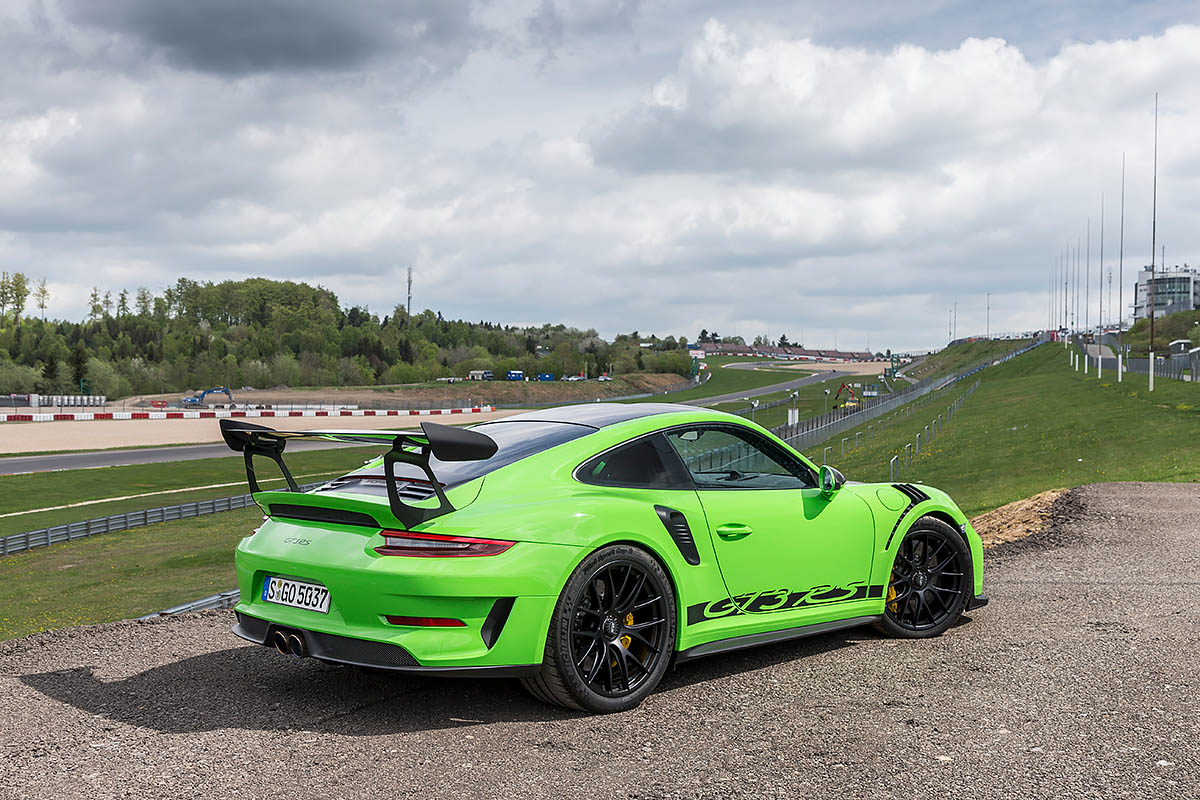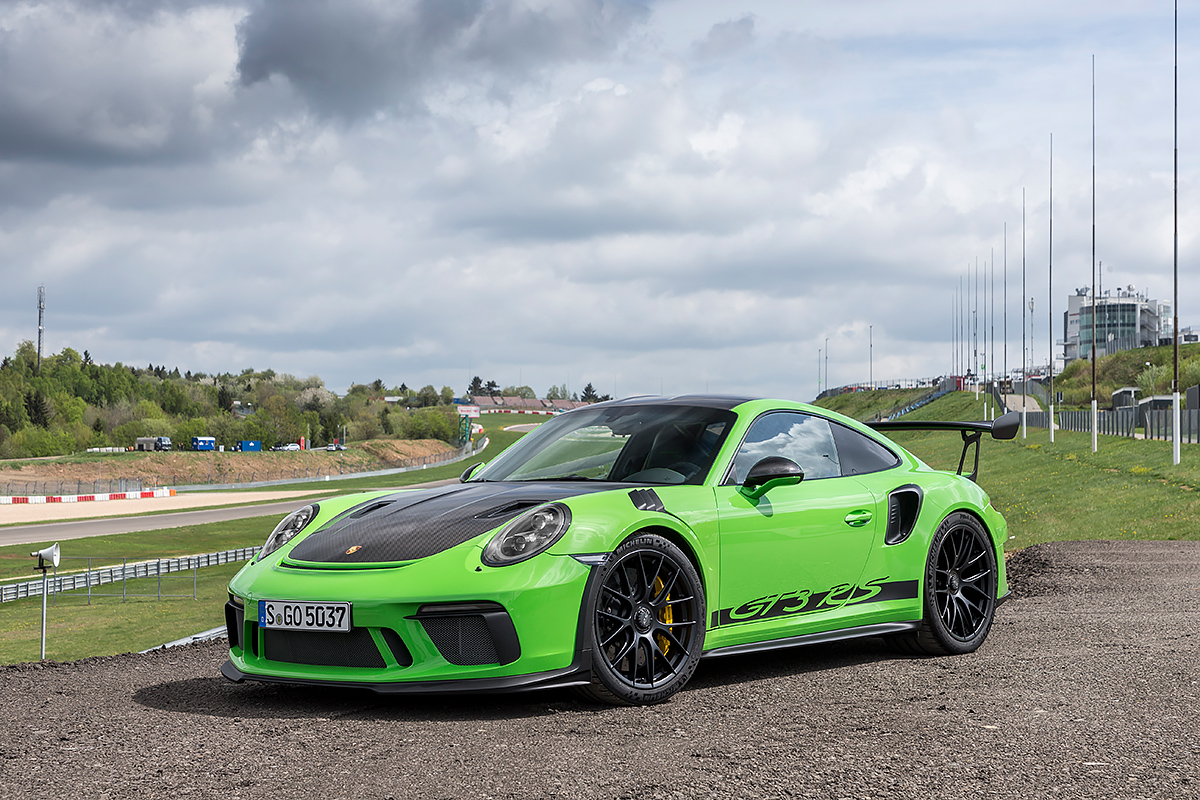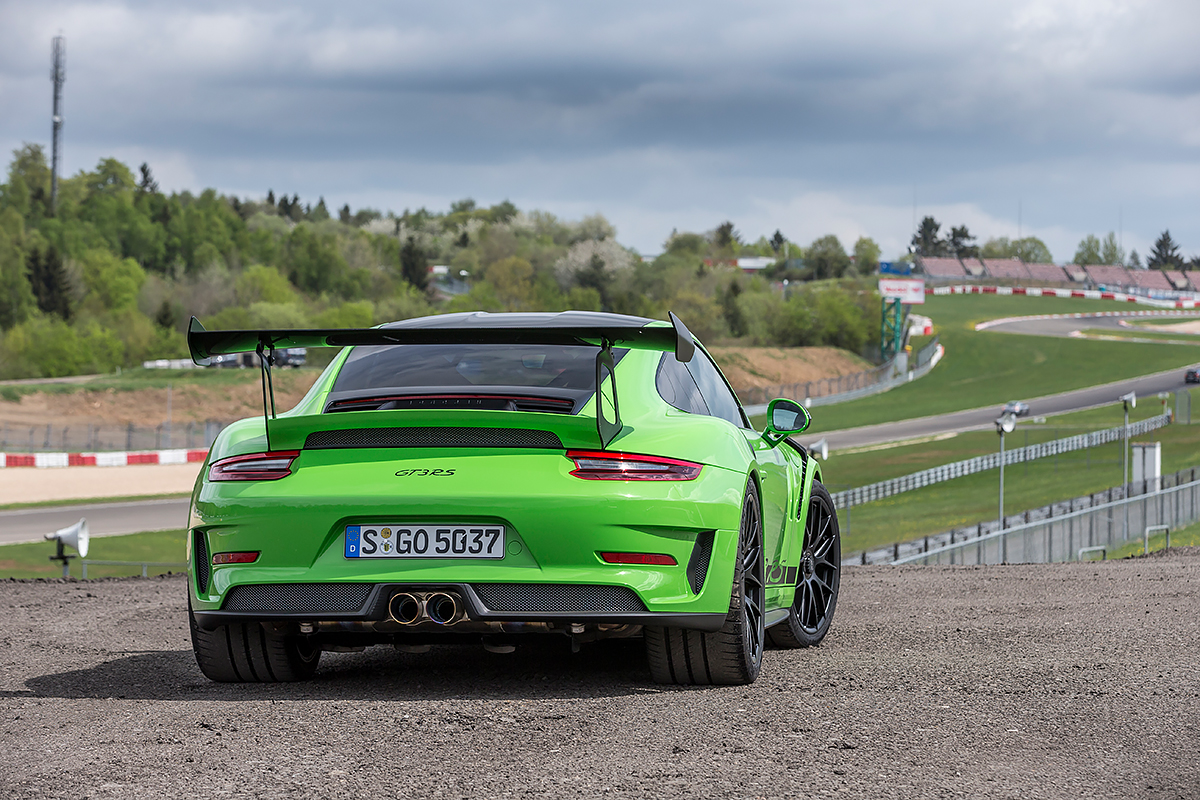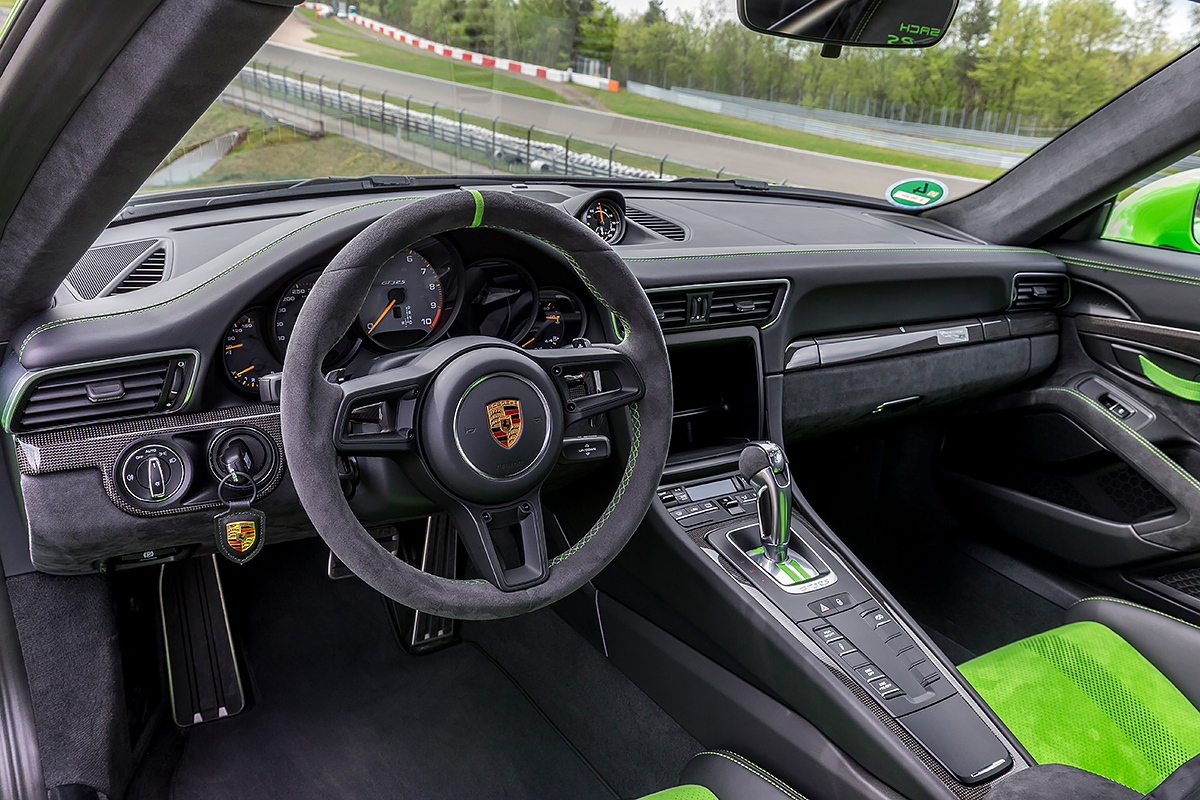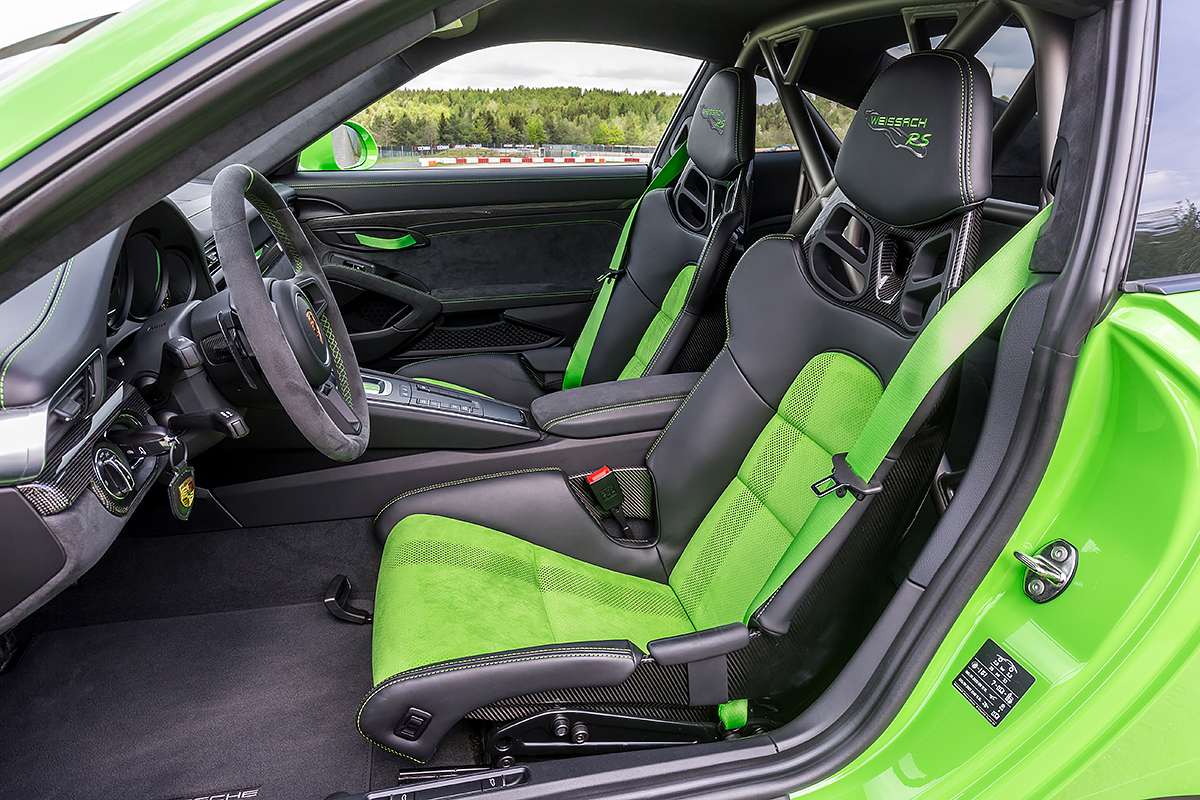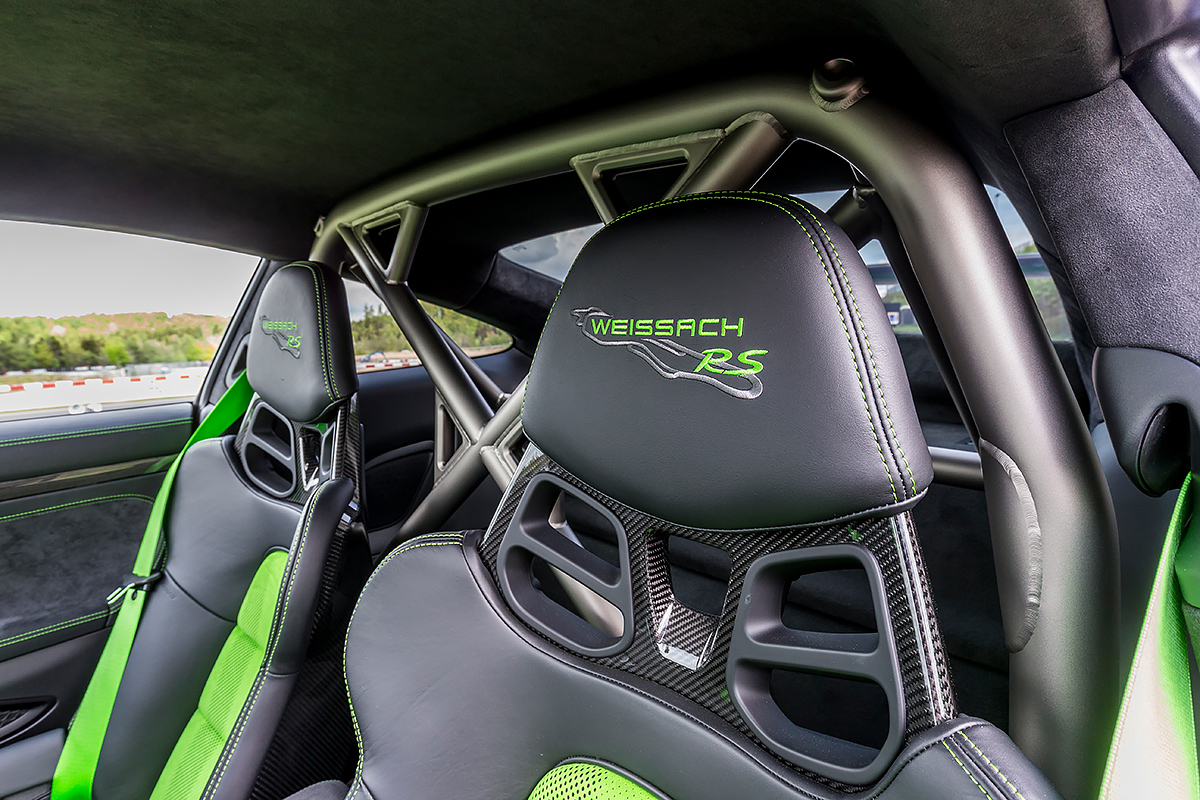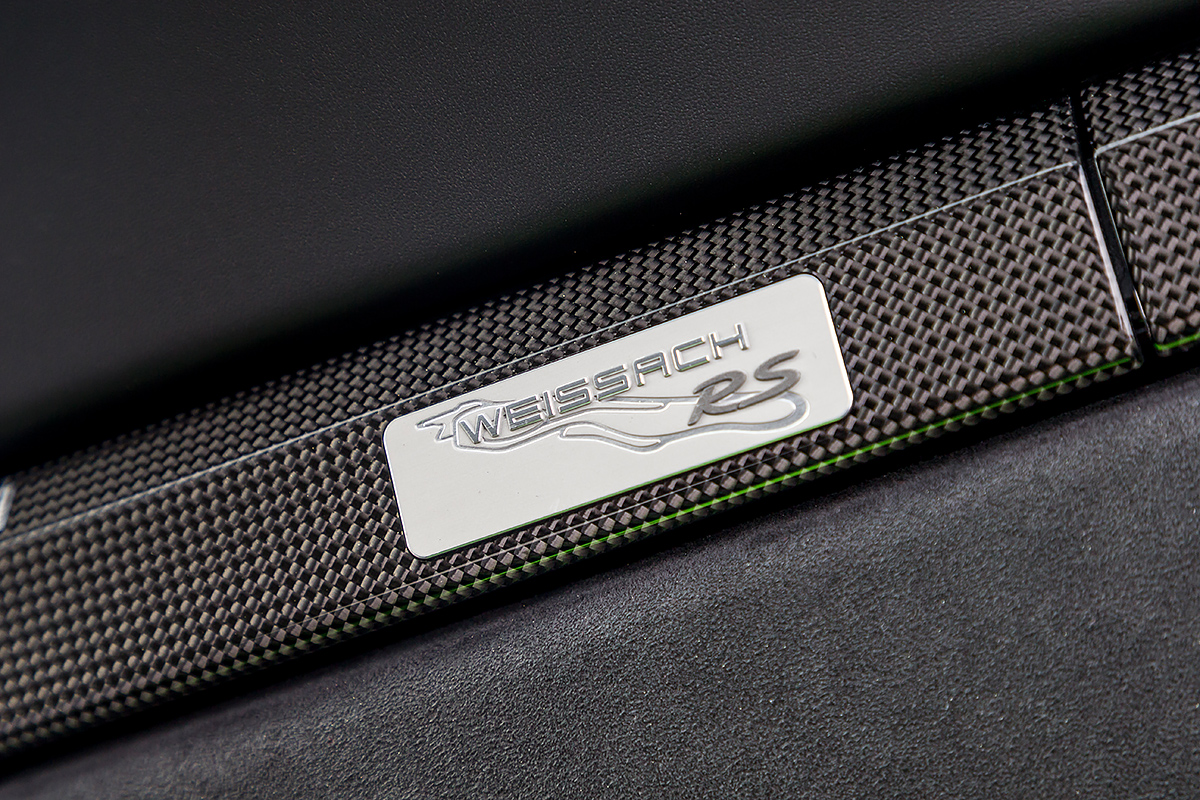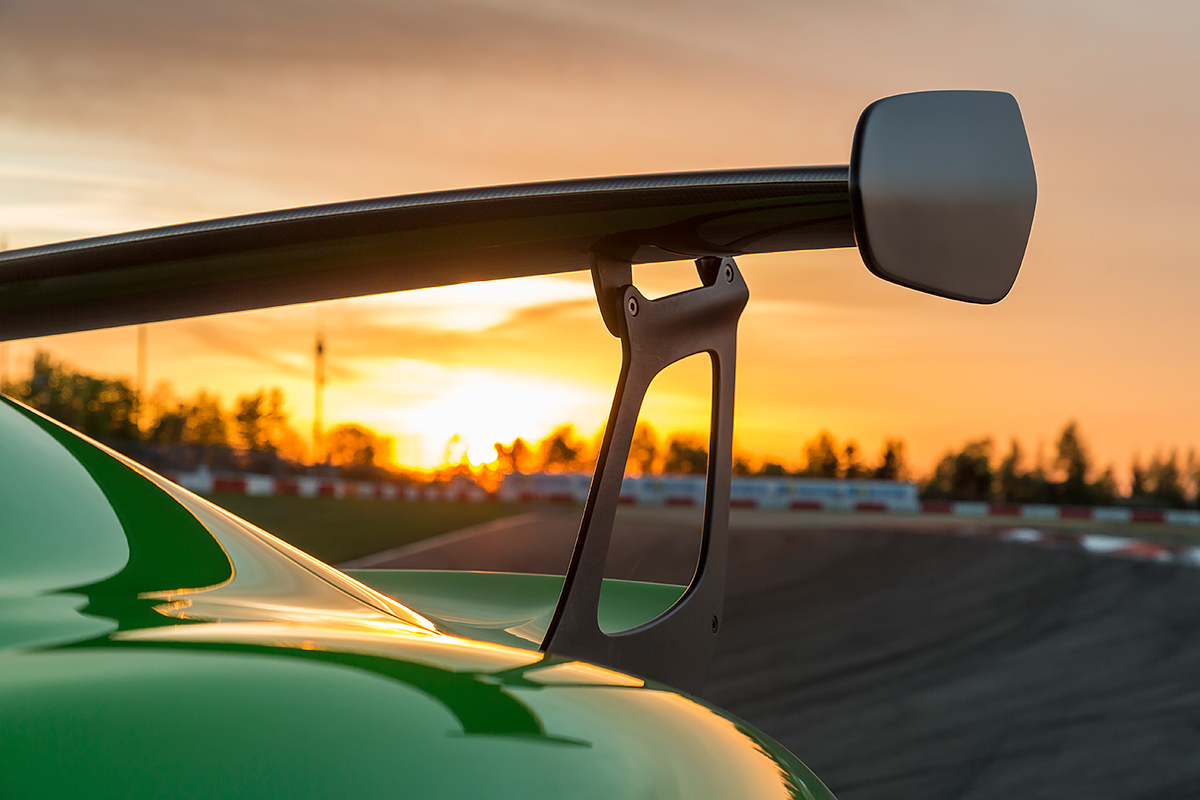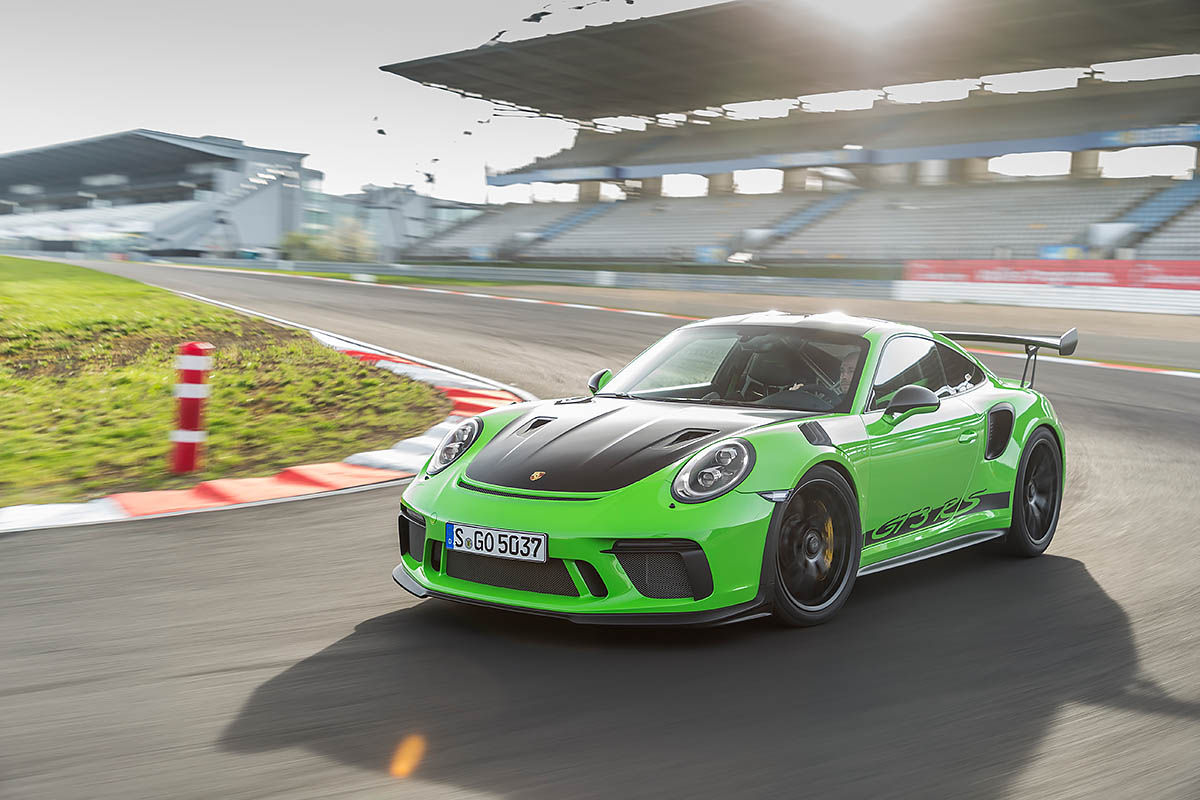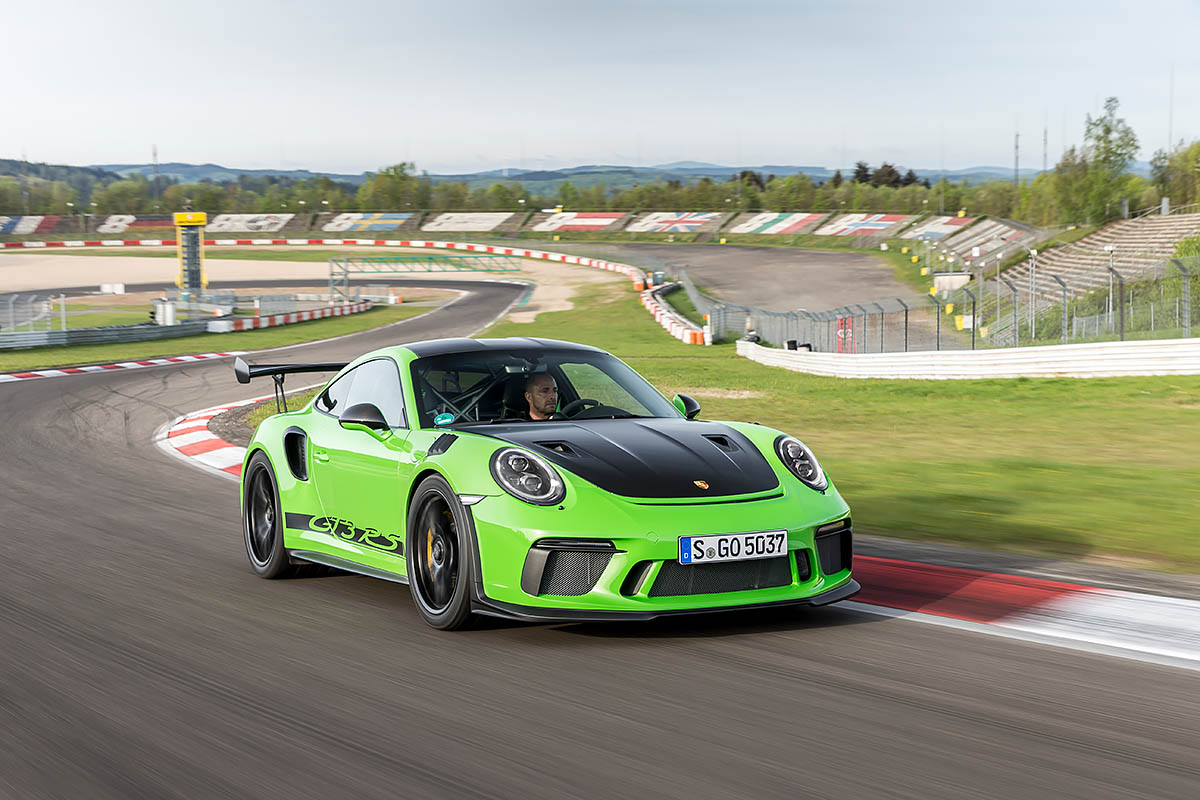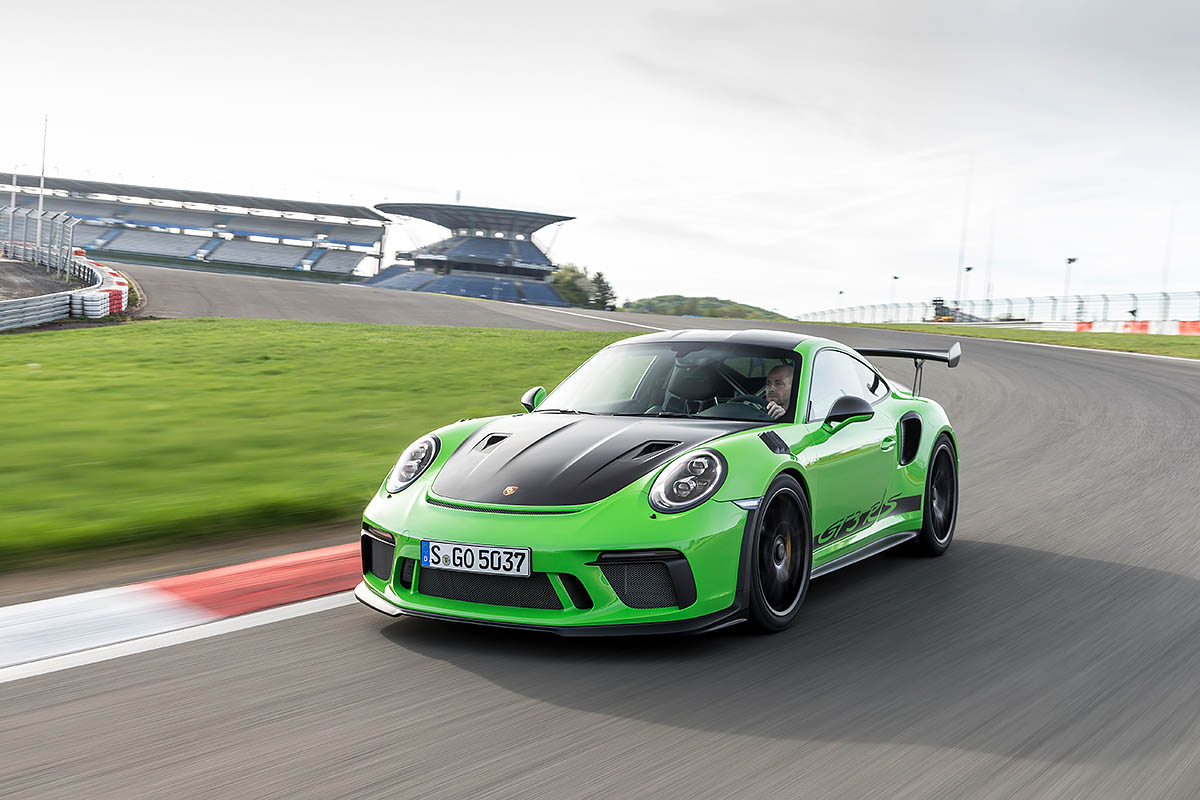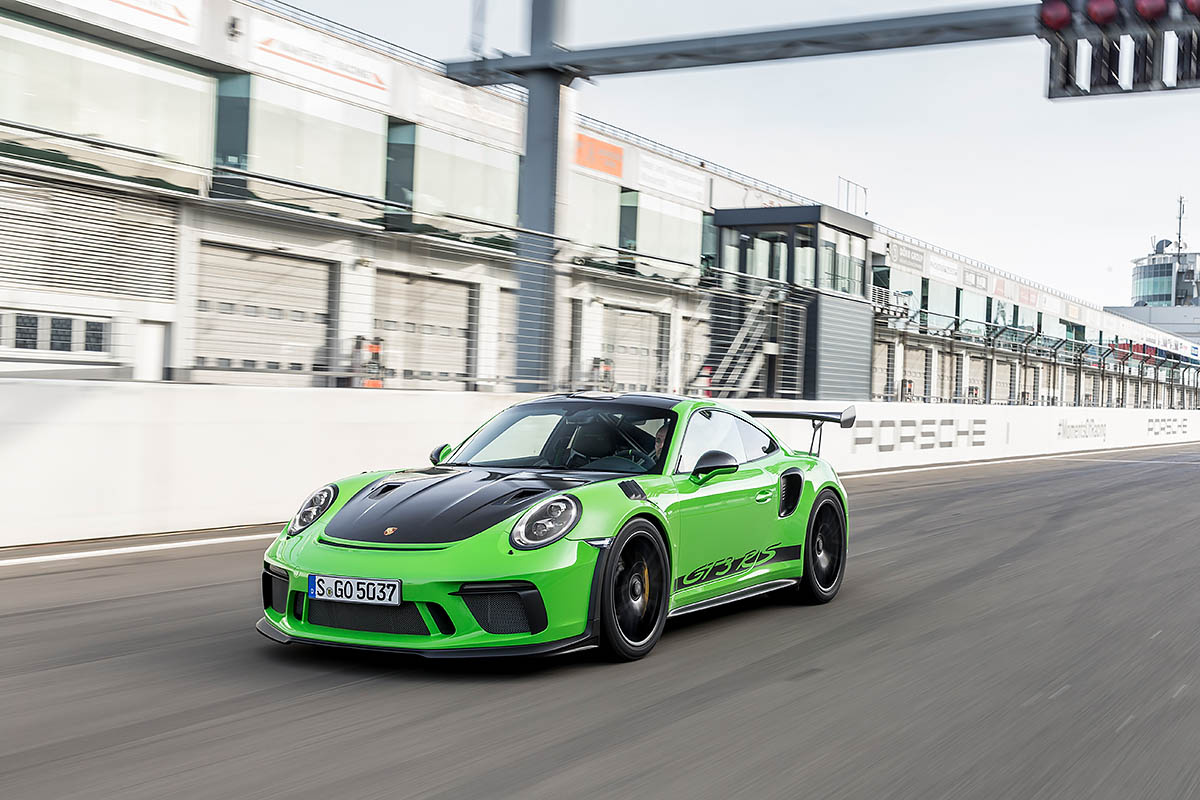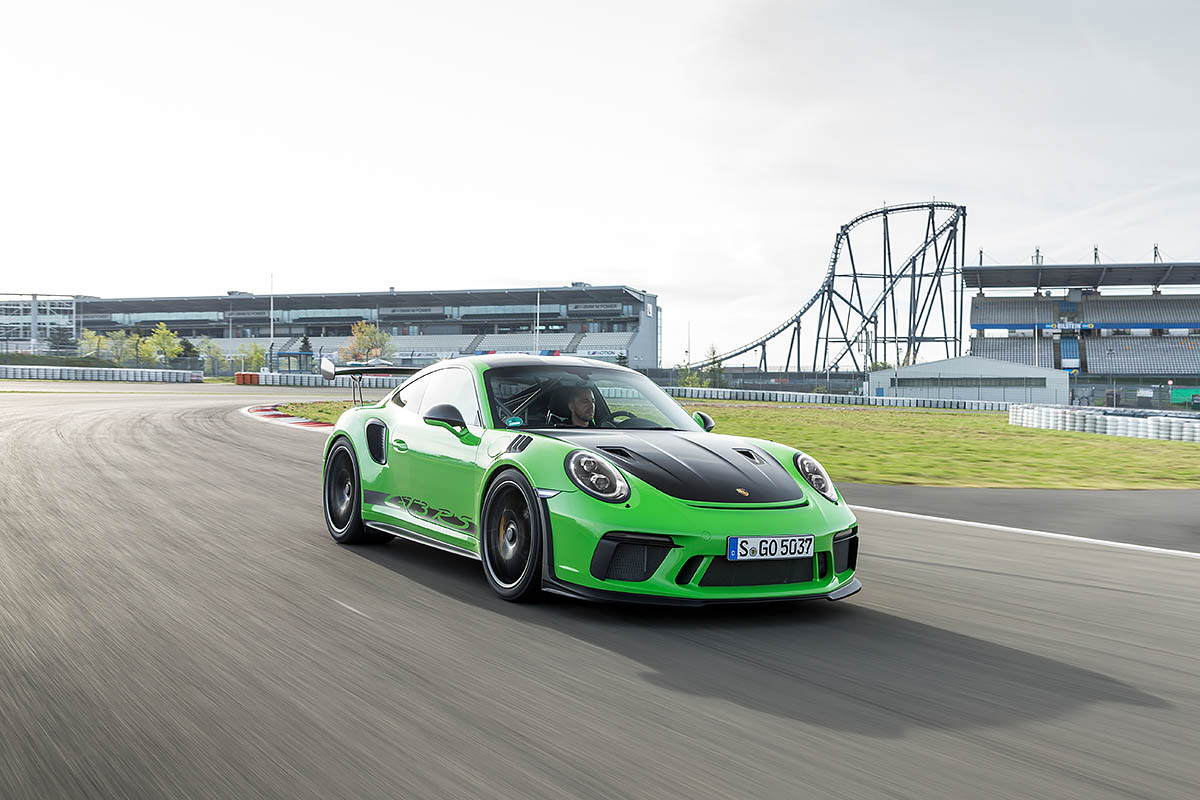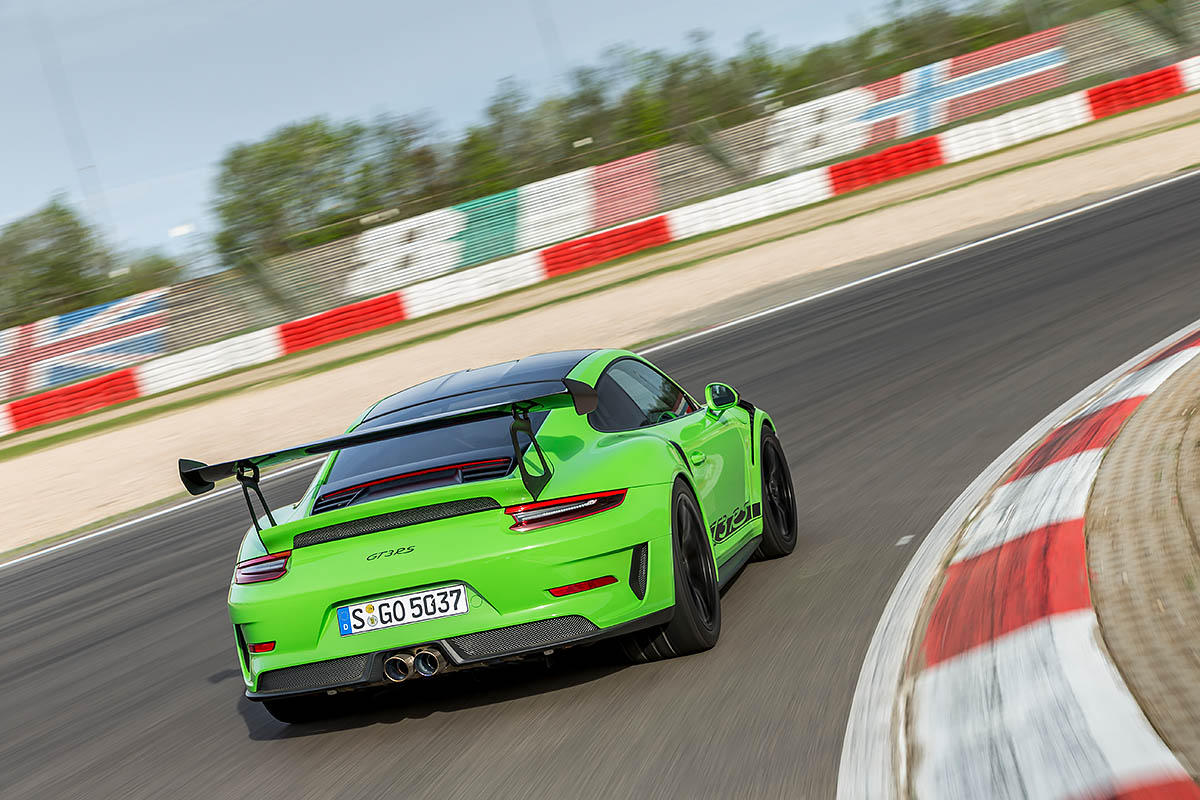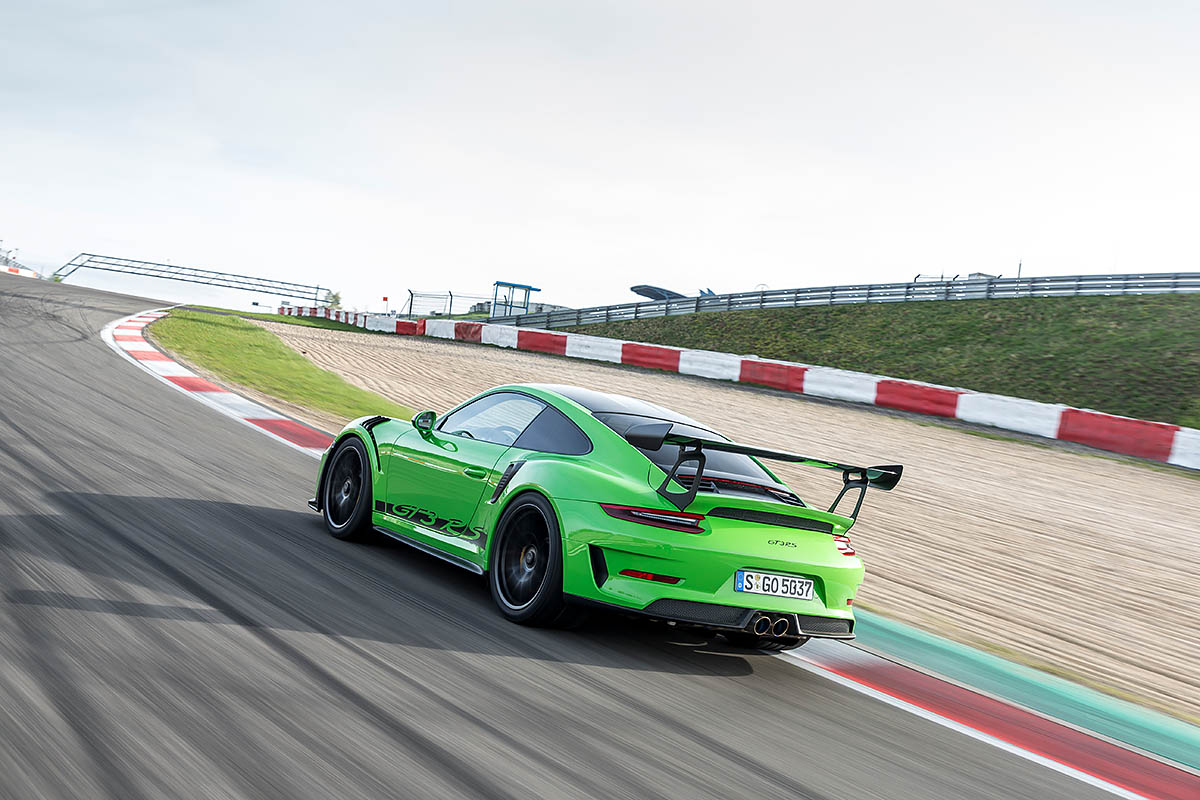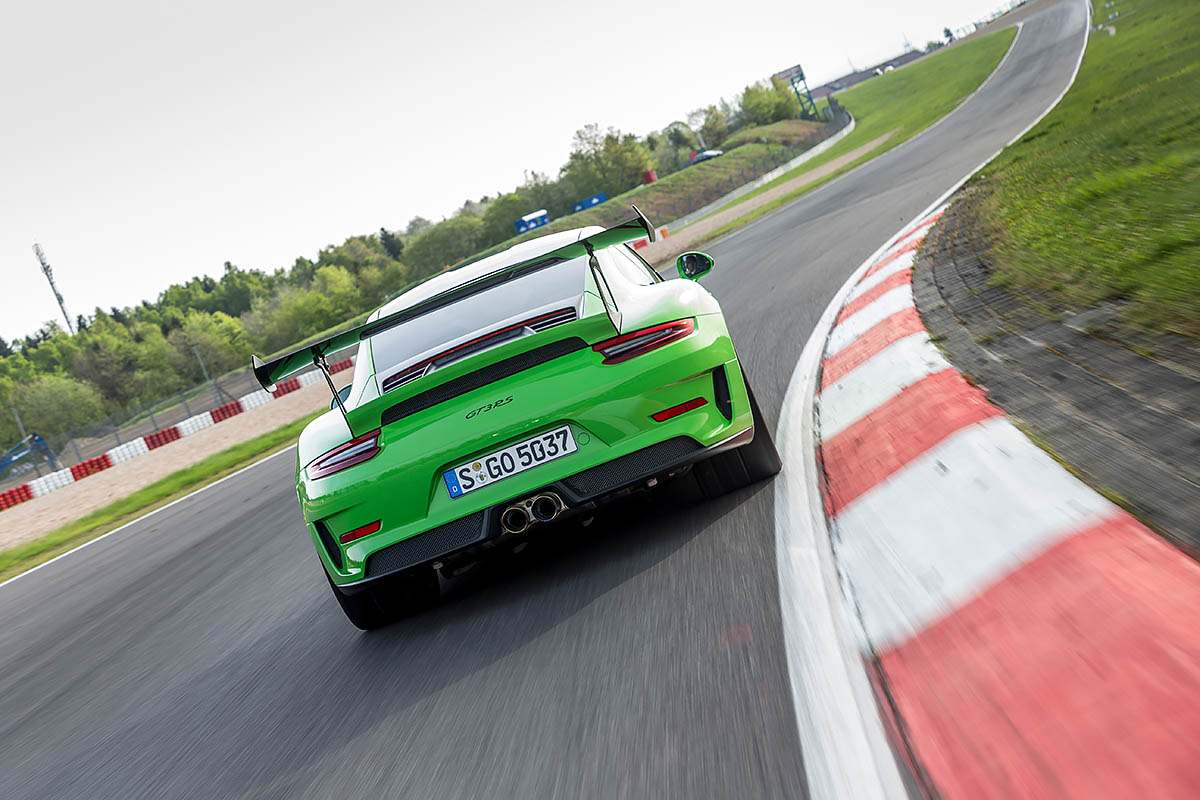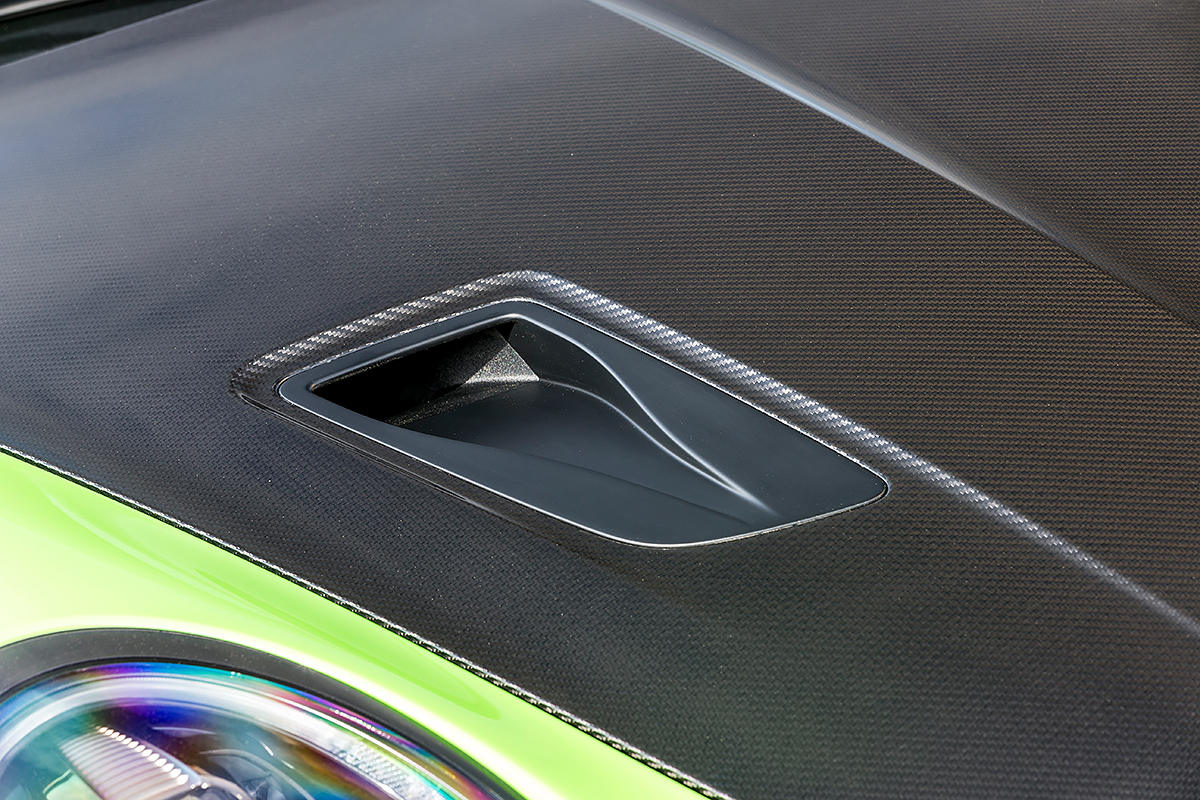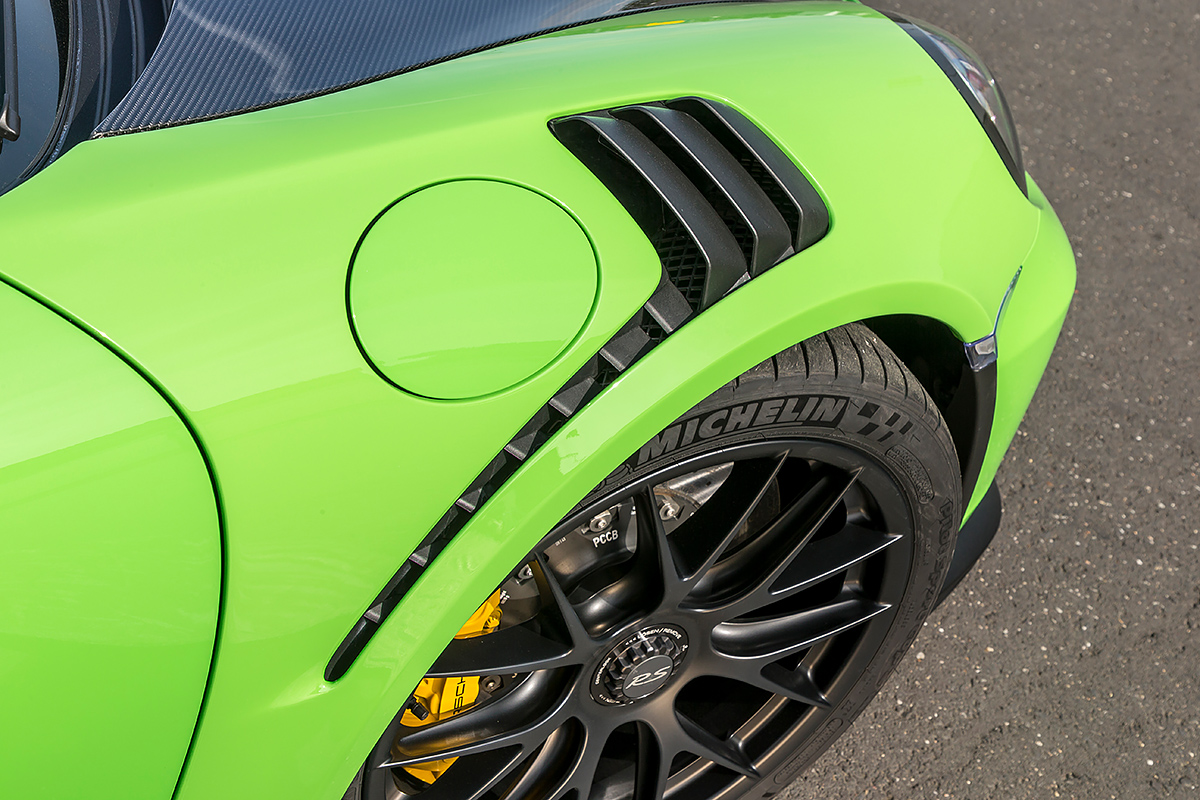
THAT recent video quickly became one of my favourites for a Nurburgring Nordschleife run. Actually, make that of any Nordschleife drive video. It joins the 1987 Ruf CTR Yellowbird clip, with mocassin-wearing driver Stephan Rozer in a most poetic 911 dance, arms going from lock to lock in a seemingly desperate embrace with the thin-rimmed steering. Now, decades later, Porsche’s 911 GT3 RS 6m 56.4sec footage through the Green Hell is immediately singed into my memory.
And for rather different reasons. Unlike Rozer, driver Kevin Estre was in full get-up; helmet, race suit, gloves, everything. He was also being timed. Apparently, the back story is that he was quick from the very first lap. Equally important, the man was consistent too.
First lap, he did 6m 59.3 seconds. Then 6m 57.5s.
Then 6m 57.7s, and finally that amazing 6m 56.4s lap. The other Porsche driver during that Ring’ attempt, Lars Kern, was just as fast. The summary is – the facelifted Porsche 911 GT3 RS is ‘easy’ to drive fast.
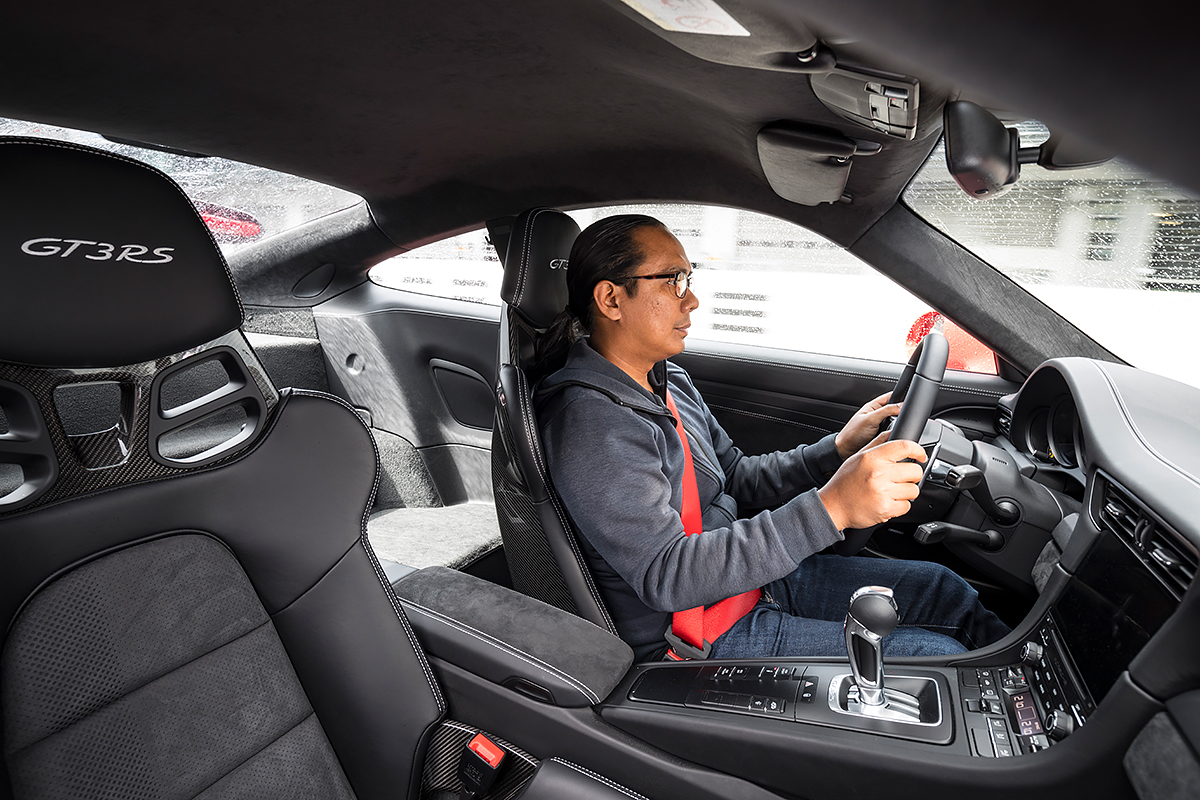

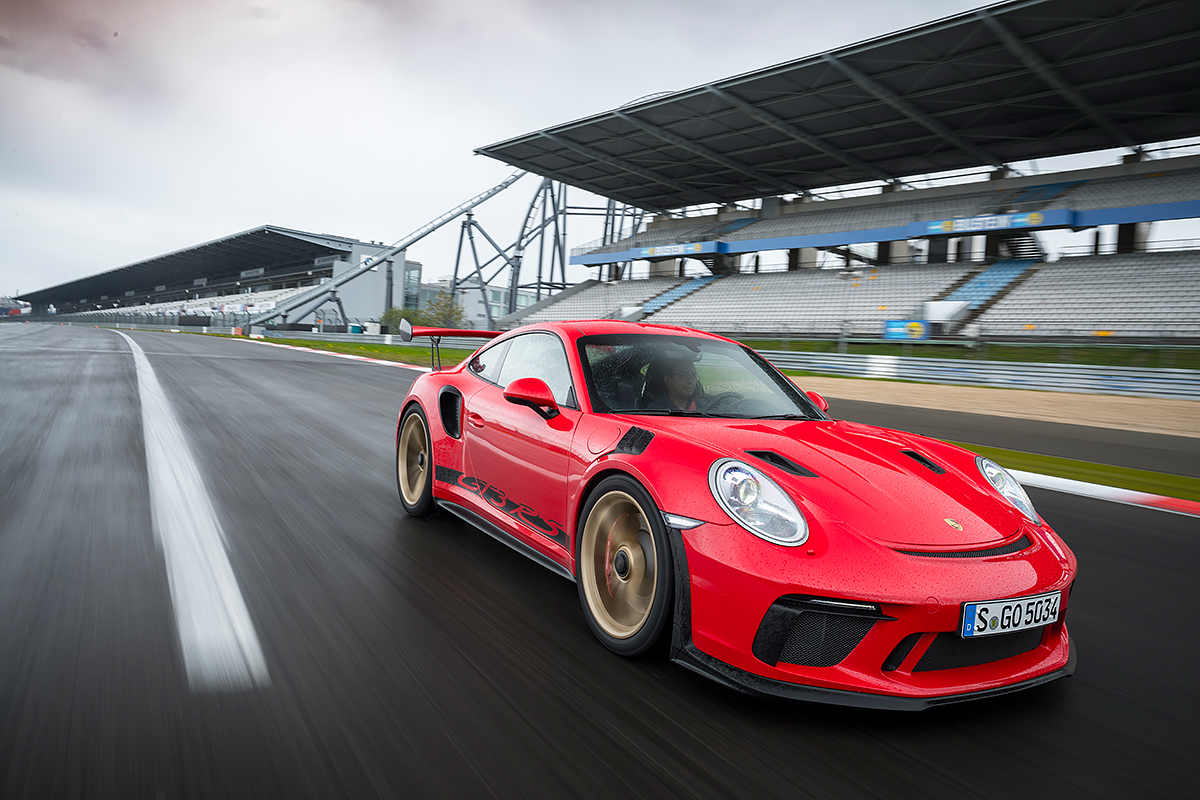

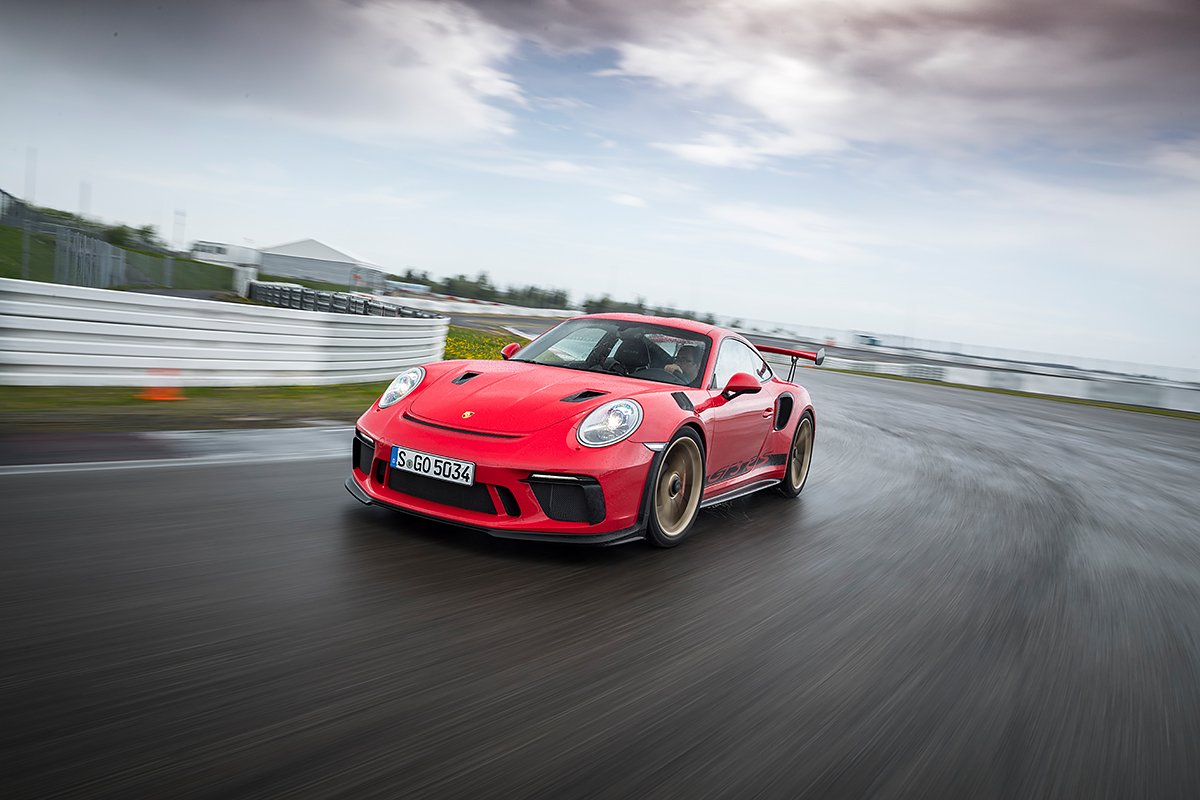
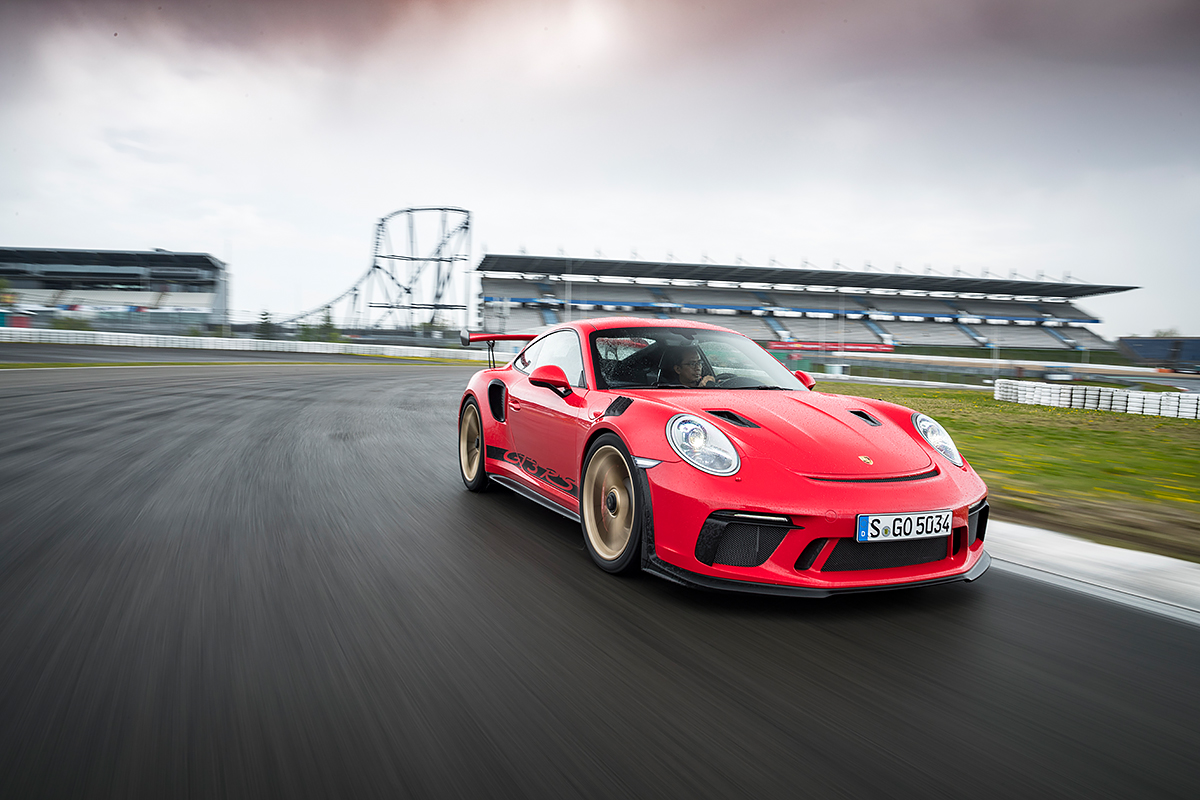
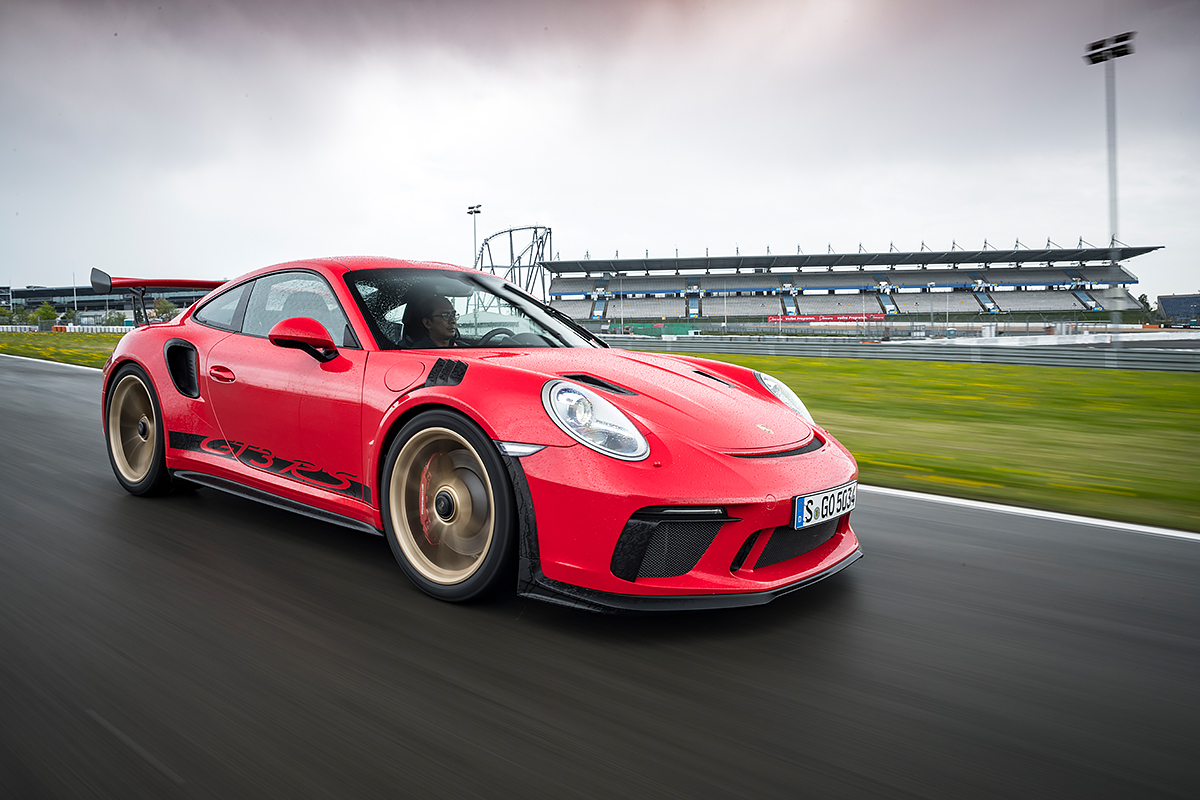
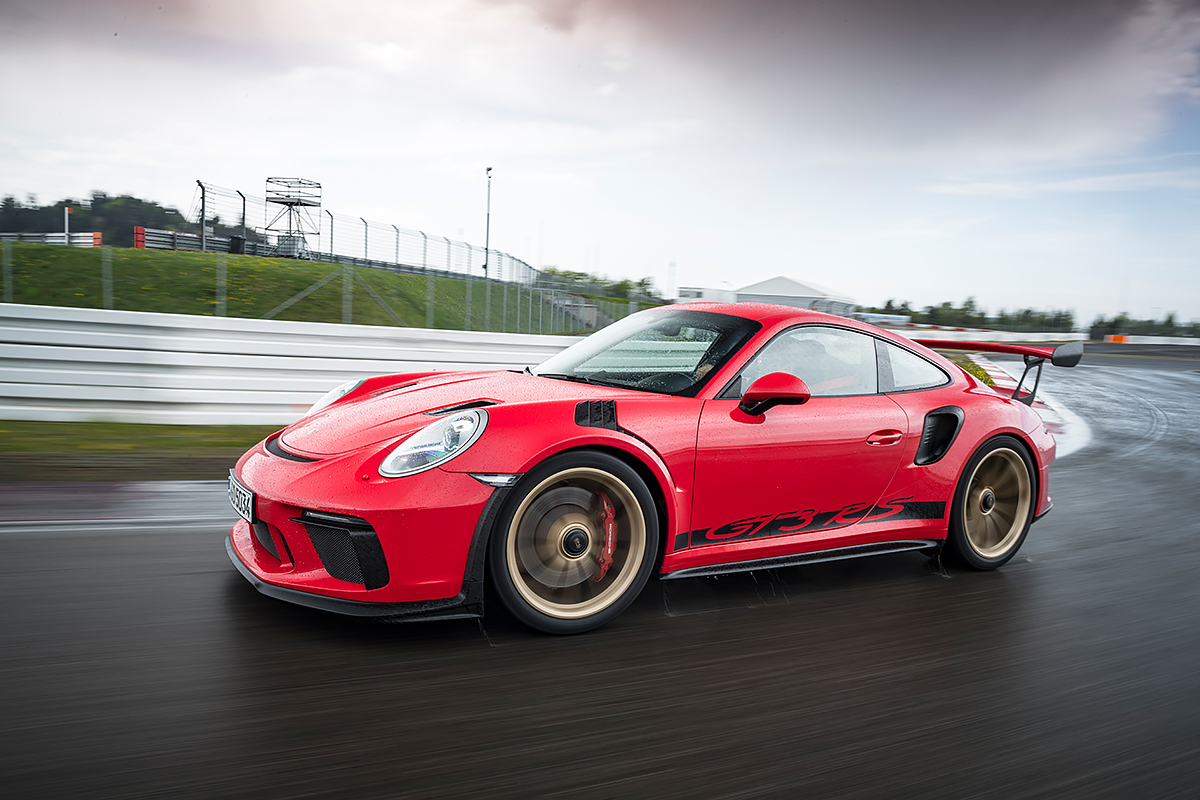
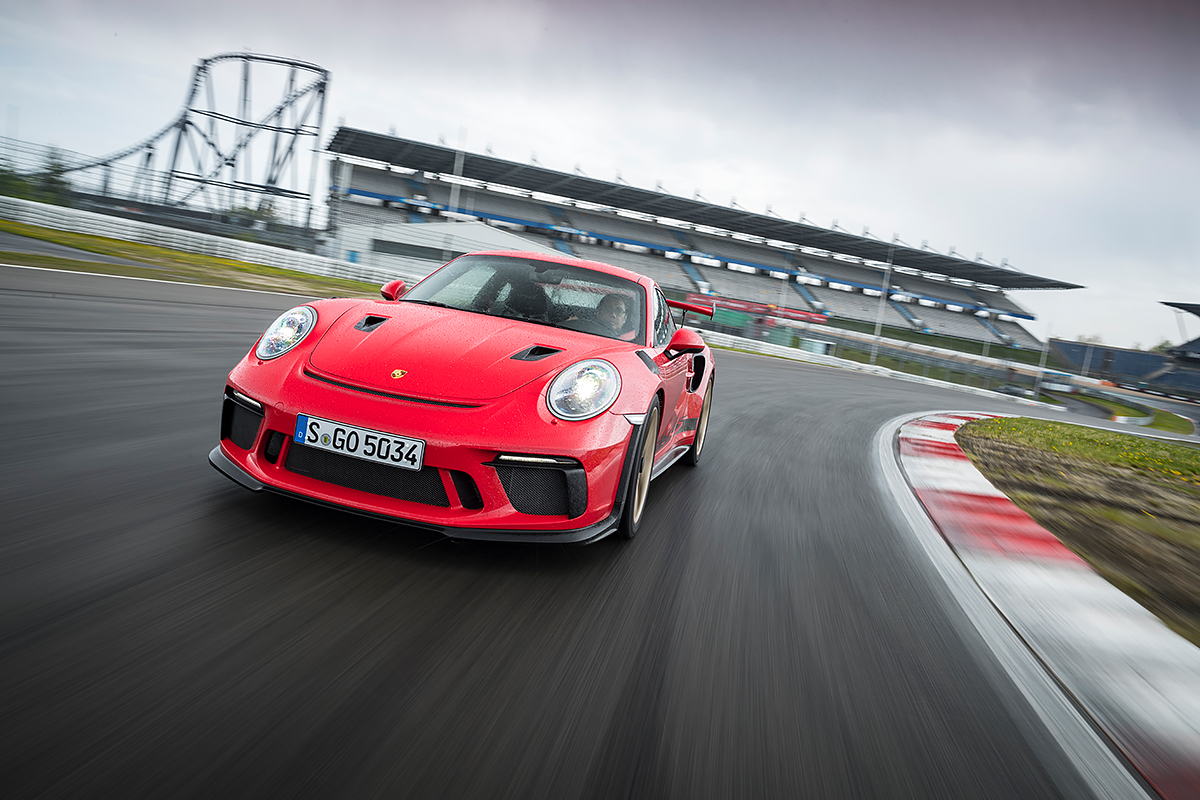
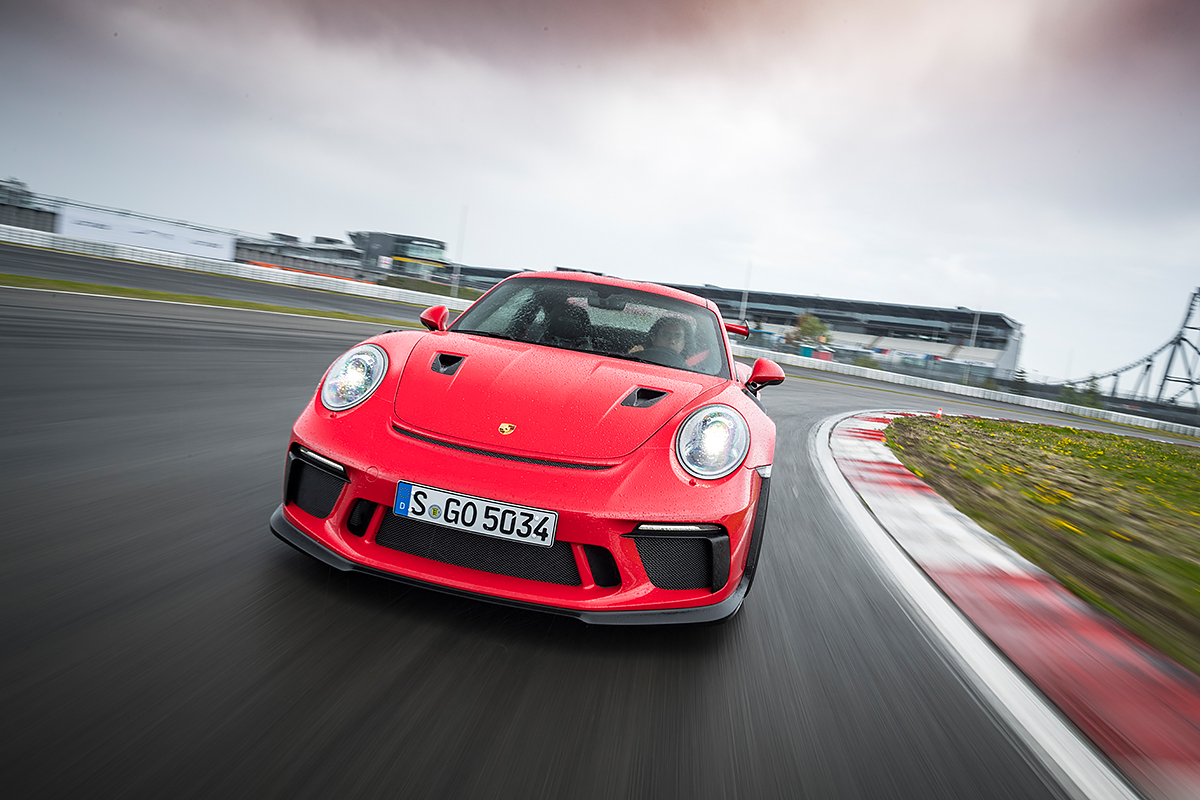
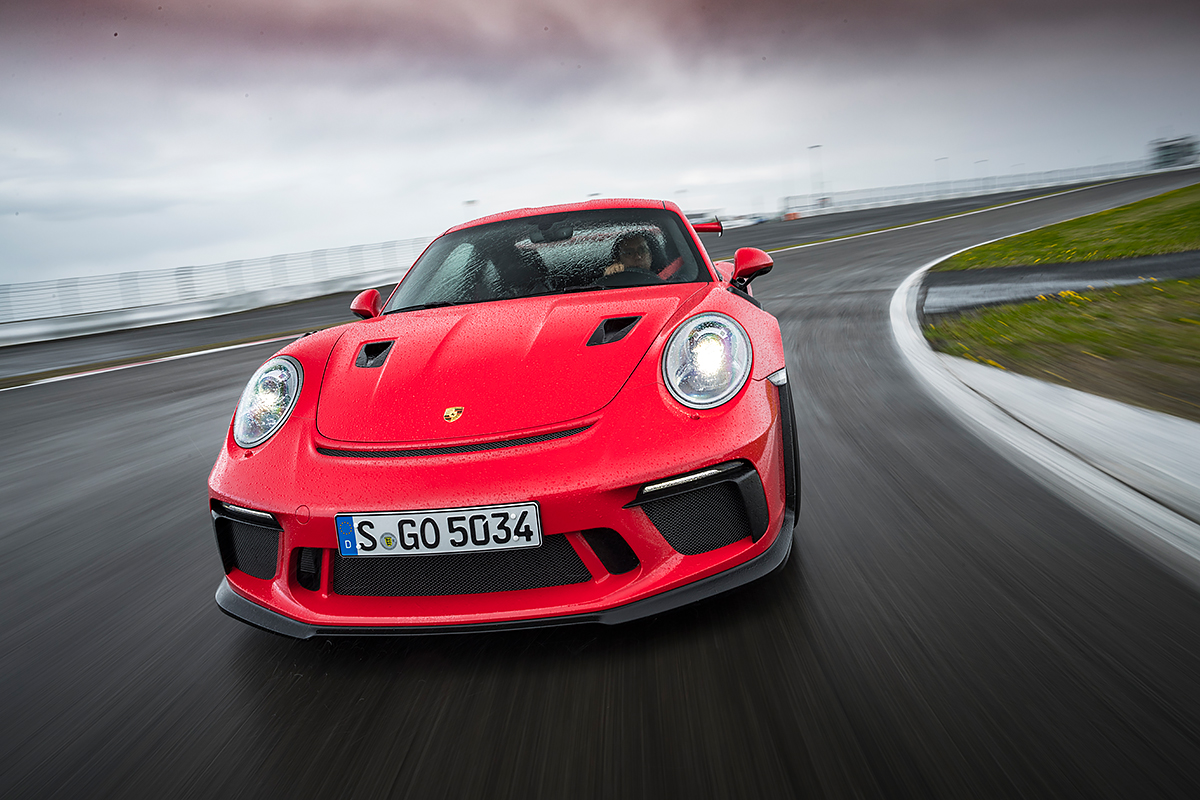
I looked around my surroundings and found that hard to believe, all things considered. First, I am of course not a professional driver. I was also not at all familiar with the track. Okay, that’s really my fault, I may have watched a lot of on-board videos of others on the GP track, but unfortunately never did commit the layout to memory. And third, 520hp to just the rear wheels would rightly plant seeds of doubt into the mind of any non-pro driver.
“Wait… Nurburgring?” you may have asked.
Yes, and no. Porsche brought me to the Nurburgring GP track. Unlike the 20.6km Nordschleife, the GP track is much newer and was built in 1984. One of those ‘so near yet so far’ kind of situation, you see.
Unlike the sunny and dry conditions when the Yellowbird and the more recent 6m 56.4s attempt was made, I faced a race track that was very damp. It had been raining the whole morning before settling into a near rhythmic rain/sunny exchange which the locals call ‘typical Nurburg weather’.
There really is very little to differentiate between the pre-facelift 911 GT3 RS to the new one. Sure, the large stickers down the flanks are a dead giveaway – and faithful to most previous GT3 RS models – but other than that you’ll need to get a bit closer. Even then, you need to know that every single winglet or cut in the bodywork has a job to do. Those serious looking wheel arch vents are designed to reduce overpressure generated by the wheels when turning which in turn increase downforce. Two NACA inlets in the bonnet are for the braking system cooling system, working in a way that does not affect the car’s 0.36 drag coefficient.
Being a road legal race machine, there is a lot more going on in terms of aerodynamics. It’s not just downforce, as clearly seen from the huge rear wing (25mm wider on each side compared to before) which can be adjusted to a ‘performance position’ that gives 40 per cent more push. But it’s also suction – the wider front lip and side skirt helps to increase the RS’ underbody surface area. The result is a downforce of 144kg at 200kph, or 75kg more than the GT3. In fact, the car is aerodynamically closer to the 911 GT3 Cup car than it is to the GT3.
Despite the stickers, large wing, a serious amount of grilles, and loud colour (the Lizard Green halo colour was specifically chosen by Porsche’s GT Division head, Andreas Preuninger), you only kick the engine alive by turning a key fob. Not quite a sports car thing, but the flat six roar as the engine catches does a good job in motivating a driver to head out pitlane.
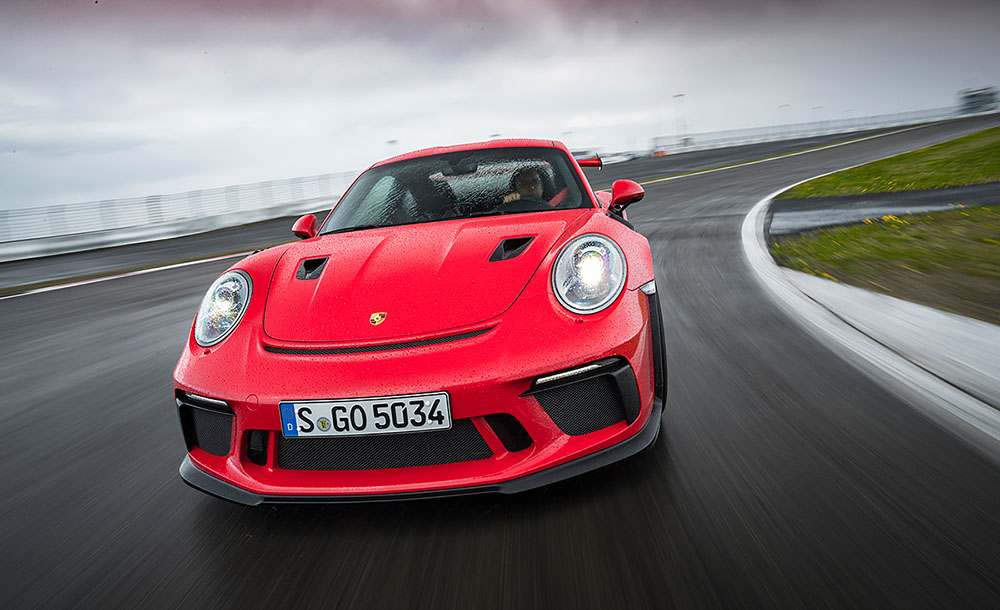
Patrick is driving the pace car in front and he seems to remember me from the GT3 drive in Spain last year. I say that because his sighting lap (so that I get a feel of its layout) could well outrun a first-gen Boxster. There’s not that much buttons to fiddle with so I just make it as edgy as I can without going against the ‘PSM Must Always Be On’ rule. Good thing too, because the learning curve is steep – both adapting to the track and driving the RS. The rain has ceased and the sun is out too, so I’m told there is hope in finding decent grip.
The main straight comes off a simple but long right-hander that let’s you squeeze the throttle long before the steering is straight. The four-litre boxer engine behind me doesn’t get to redline in the first hot lap; it takes time in getting used to its 9,000rpm max. It’s a nat-asp engine so max power is at an intoxicating 8,250rpm and every bit of it reaching there is a pleasure. As good as this engine was in the GT3, it still felt it could use a bit of power out of corners. The RS’ 500hp (20 more than the GT3) feels just about right. Torque goes up too by 10Nm (now 470) coming in at 6,000rpm. 0-100kph is in 3.2 seconds, but it’s the corners where this car underlines its credentials.
Make no mistakes, this is a race engine that can just turn up at any race series and be competitive.
Make no mistakes, this is a race engine that can just turn up at any race series and be competitive. This makes it robust; the valve clearance, for example, is adjusted just once during the engine’s production. And designed to last for the entire life of the engine. Unsurprisingly, it is dry-sumped but an interesting feature is that the oil is defoamed before piped back to the oil tank. This originates from motorsports, naturally.
Even with a compromised track surface, the speedometer shows almost 220kph before I needed to stomp on the brakes as I passed the Ring Werk theme park’s roller coaster track on my left. Could have braked later, honestly, but no sense in getting Patrick nervous. Again, it is at the turns where the RS truly differentiates itself from the GT3. There’s just so much more grip at the front end, and the rear somehow is never far away from the plot. A lot of this comes from the enhanced Porsche Torque Vectoring Plus system with its electronically controlled rear diff. Also let’s not forget the specially developed Pilot Sport Cup 2 tyres, 265/20 up front and super wide 325/21 at the rear.
At 1,430kg, it’s honestly a bit more than expected, defying its ultimate agility. The car’s is in fact one of the lightest vehicles in the competitive environment. An aluminium-steel composite makes up most of the construction, with much more exotic compounds making up for the rest. Sections of the front and rear body is made from lightweight polyurethane plus carbon fibre elements. The rear window and rear side windows are lightweight glass (same weight as polycarbonate but more resistant to scratches). To top it off, the roof’s magnesium (pun intended).
The new GT3 RS just makes sense at speed, right down to how the PDK shifts. It is mega fast, but unlike in an R8 and its blunt gearchanges for example, the low-gearing upshifts is much smoother to not disturb driveability.
In hindsight, the 911 GT3 RS’ magical balance between all the various components needed in high performance driving is perfectly demonstrated during Kevin Estre’s amazing sub-7 minute Nordschleife drive. It truly was a ‘sloppy’ drive with its throttle/brake applications mid-corner, crazy steering work, and iffy racing lines, yet he always seemed in control. It’s the sort of car that can be taken to the limits, and once there, provide a large margin for the driver to operate in.
The Nurburgring GP circuit had a few corners which immediately caught my fancy, notably one rapid corner sequence (think Sepang’s turns 5 and 6, but more direct and quicker), the other being a high-speed right-hand kink that goes into an uphill straight. The first wasn’t too difficult to get right, and once there, the lateral forces the GT3 RS allowed was numbing. The second required much more practise and courage – the approach is roughly 170kph with barely enough room at the exit it seems.
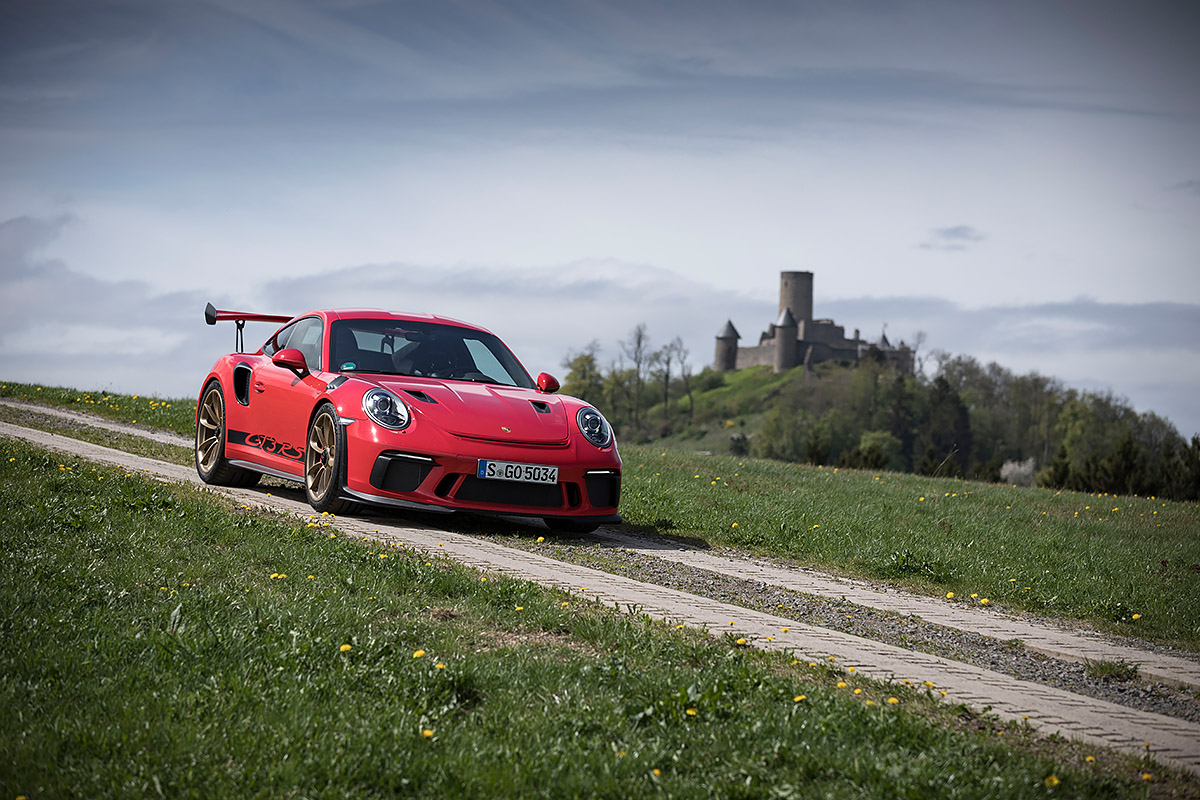
There’s nothing basic about the 911 GT3 RS but customers who want more can go for the Weissach package. This brings in a rear wing, front lid, roof and uppers shell of the exterior mirrors made out of carbon-fibre reinforced plastic with a carbon-weave finish. The anti-roll bars and coupling rods are also made from this material. The Clubsport-spec steel roll cage is swapped to a titanium one as well. The rest of the weight-saving measures goes crazy, really – CFRP steering wheel cover, lighter gearshift paddles, and even lighter carpets. A bit silly talking about carpets in a car with centre nut alloy wheels and roll-cage, but I kid you not. All that to get rid of 30 kilograms.
The new 911 GT3 RS didn’t take long to prove how that 6m 56.4s is even possible. Porsche says the car is closer to their proper race machines – including the Cup and RSR variants – than being a road car. Well, there was no open road test so I can’t say for certain. However, this is where the car belongs, laying down rubber, filling the air with 9,000rpm engine noise, and making people’s heart beat faster with excitement.
SPECS
| Powertrain |
3,996cc flat-six, NA, RWD, 520ps, 470Nm |
| Price | From RM2.23 million |
| Economy | 12.8L/100km, 291g/km CO2 |
| Performance | 0-100kph in 3.2 secs, 312kph |
| Weight | 1,430kg |
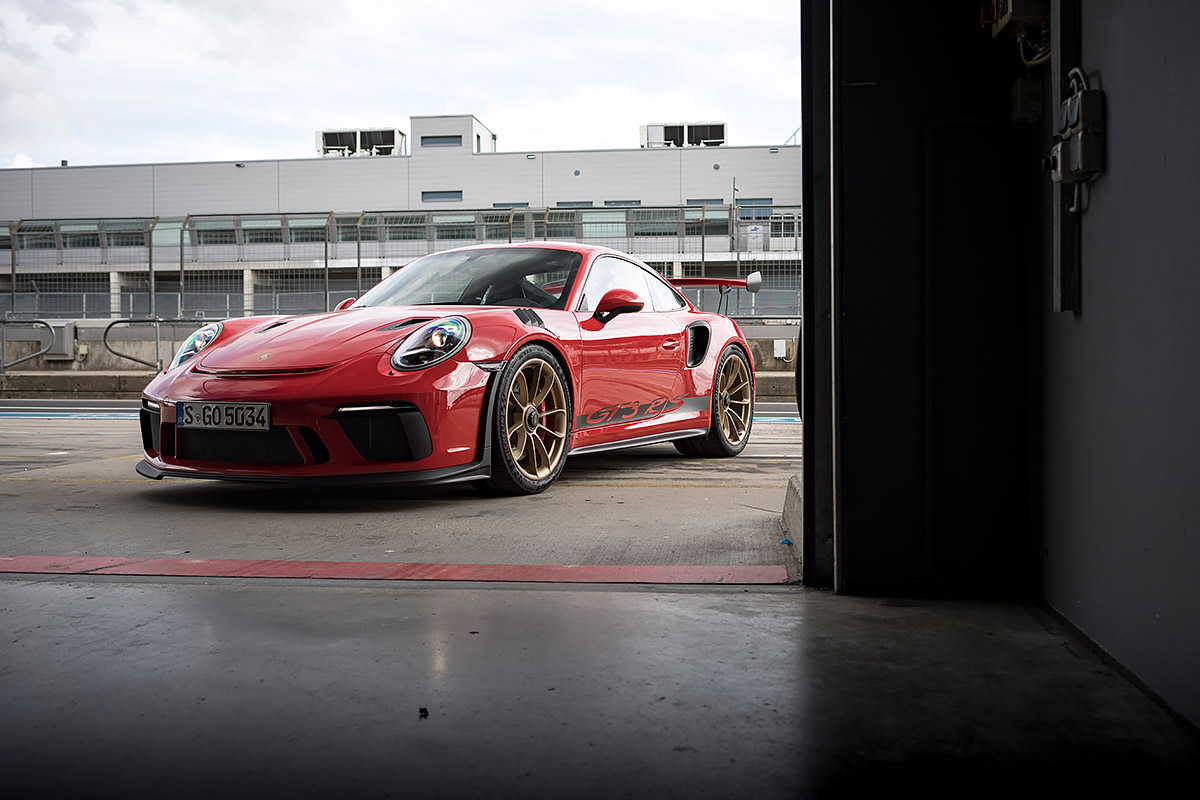
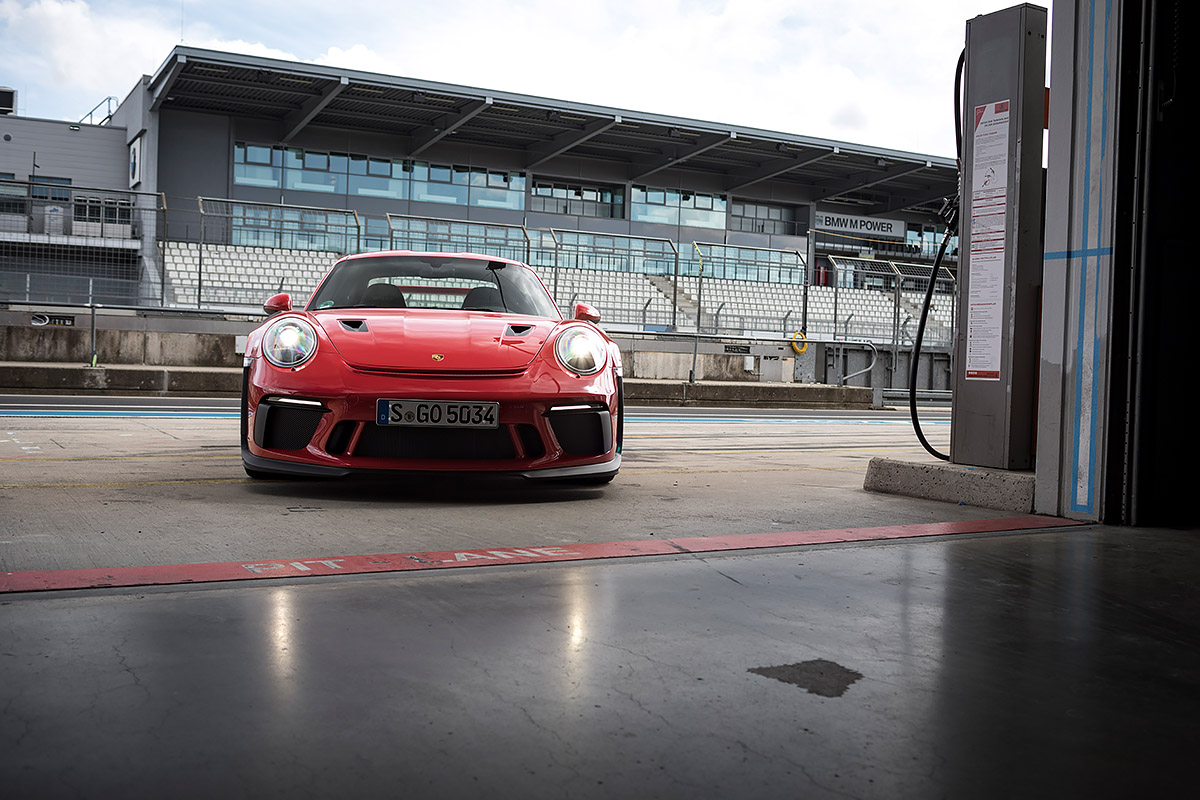
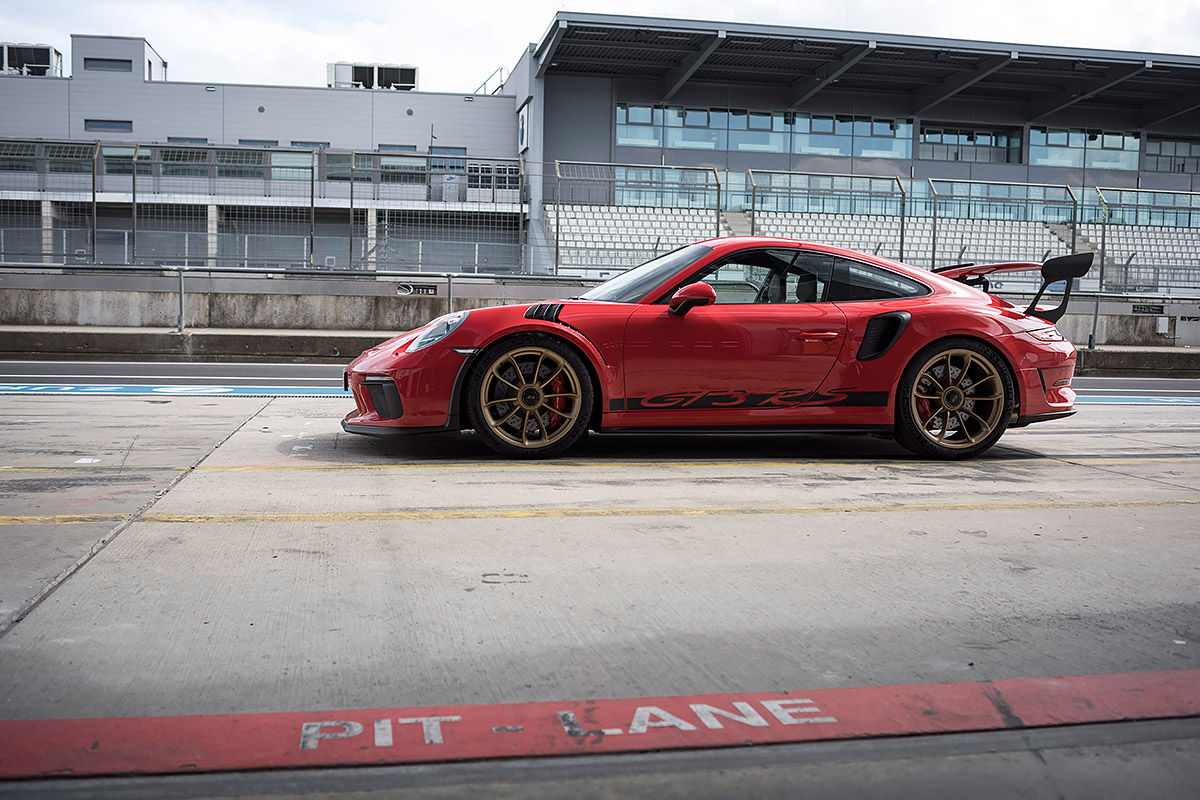
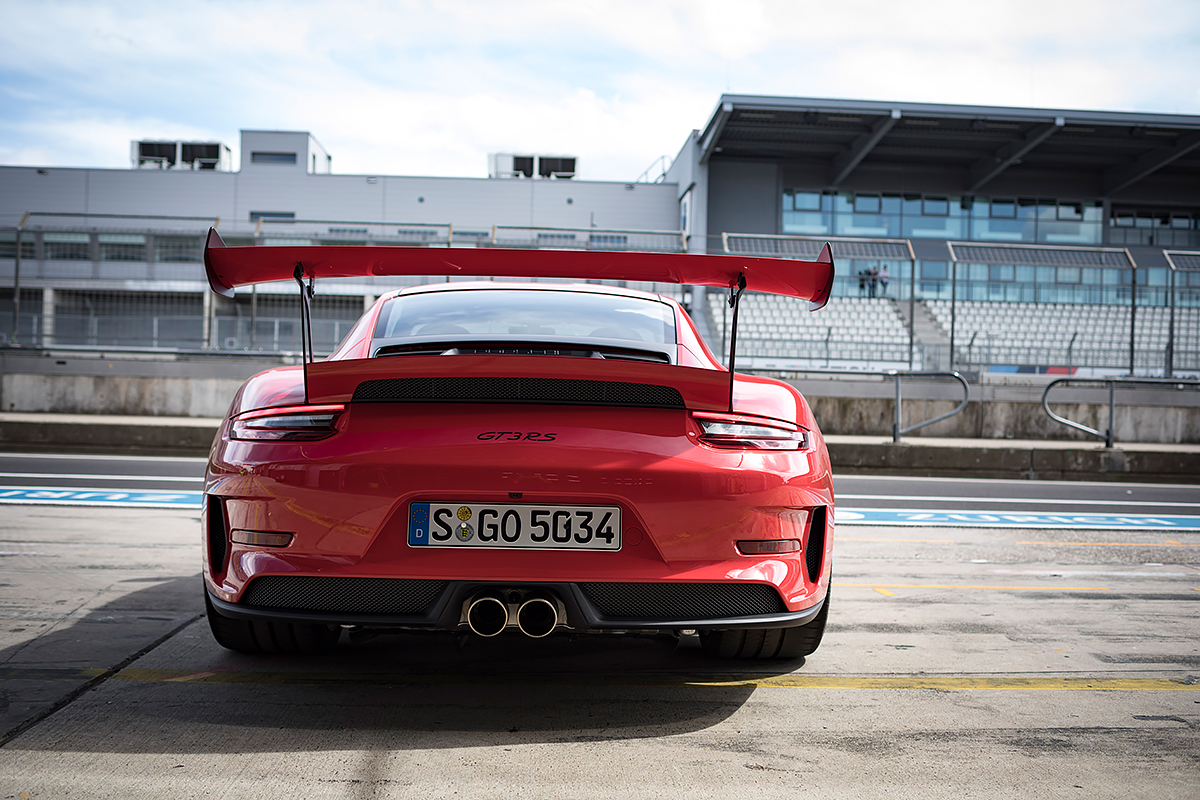
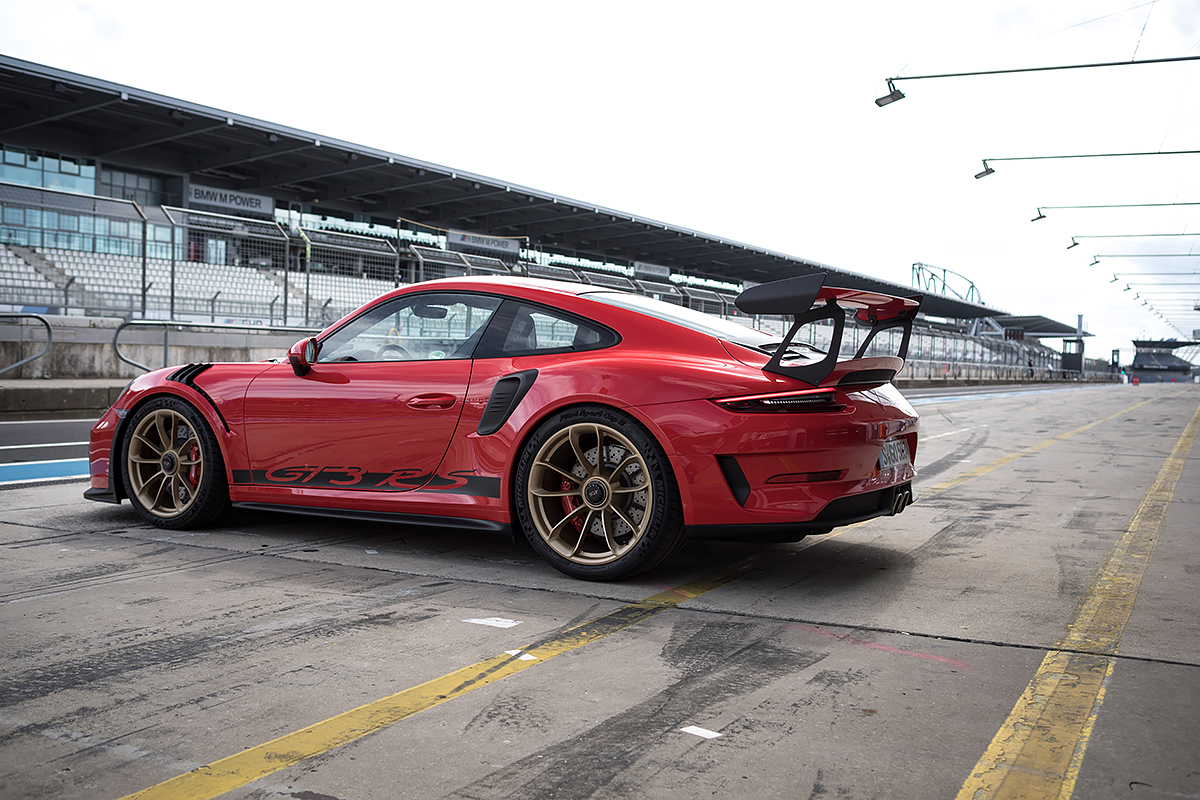
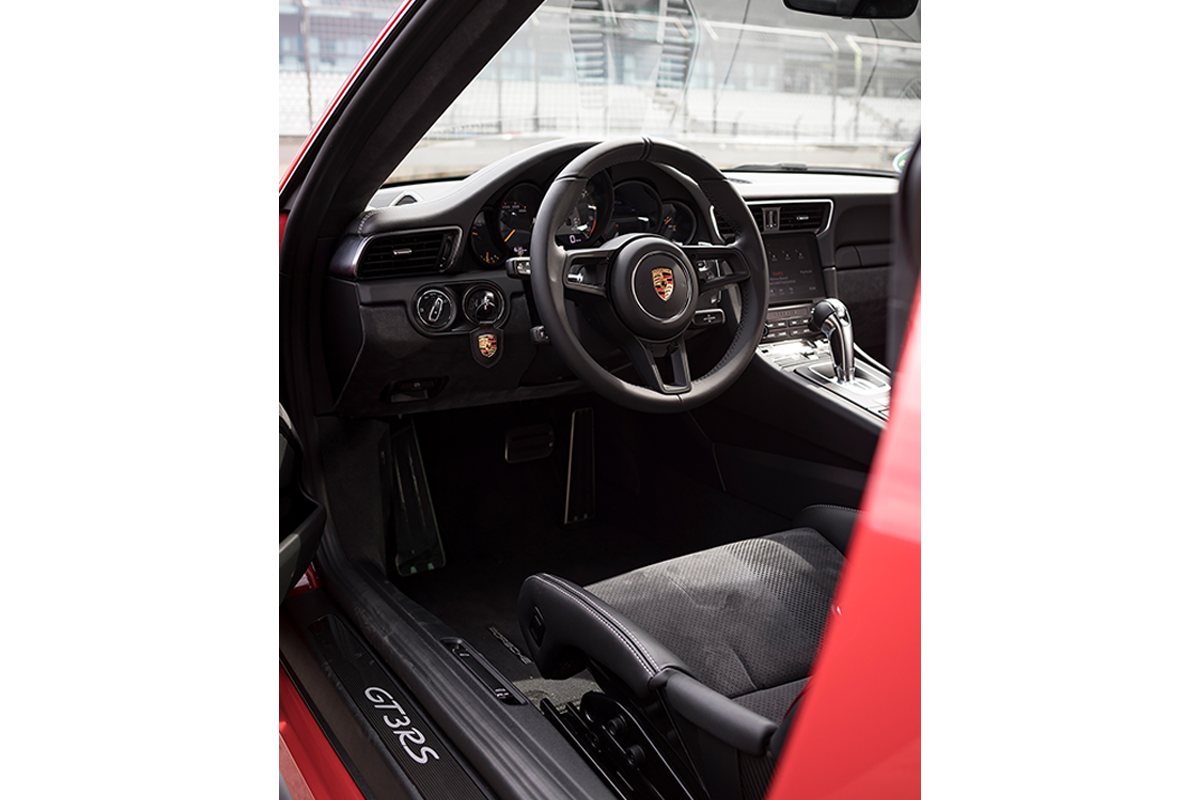
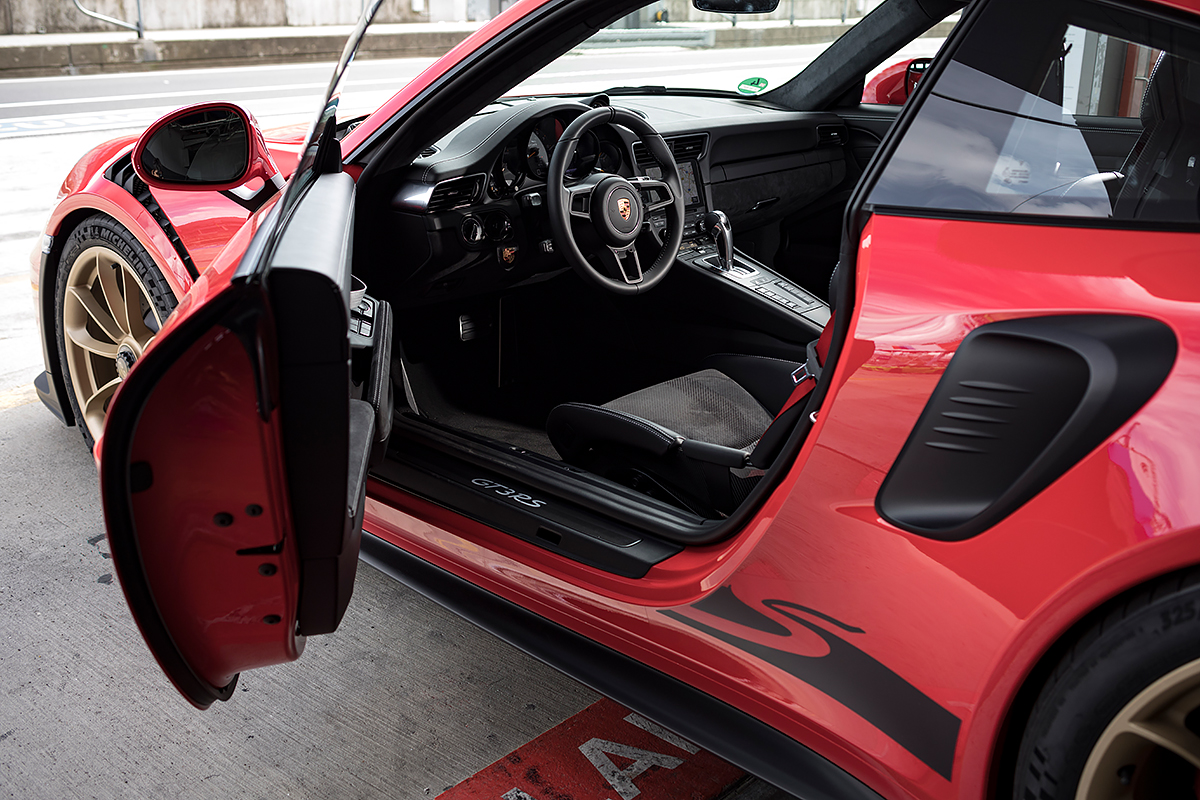
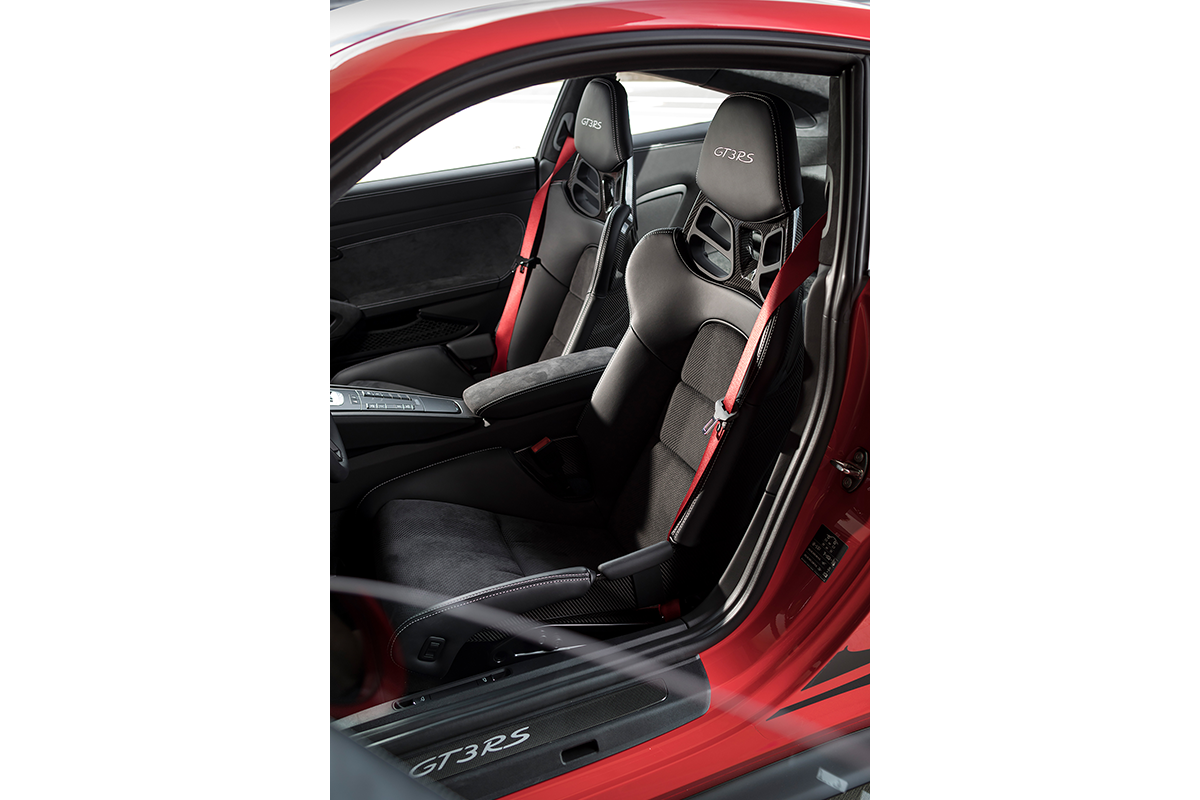
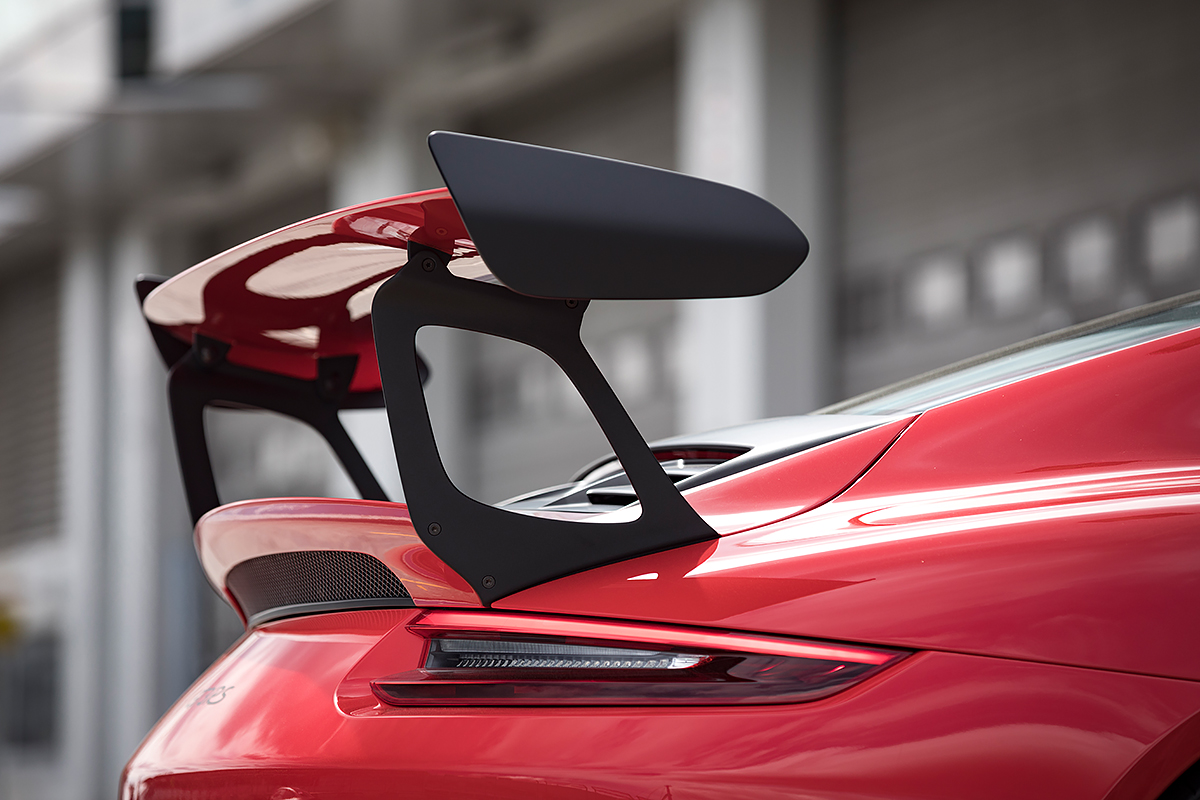
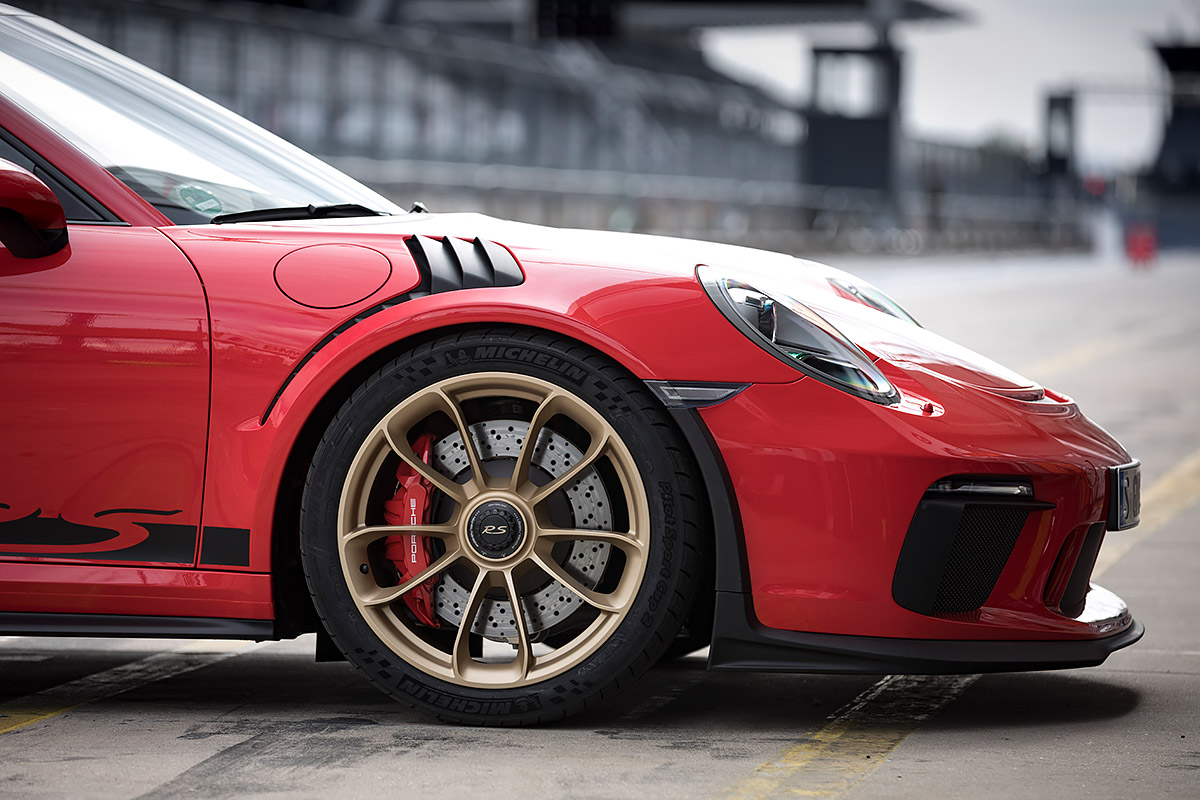
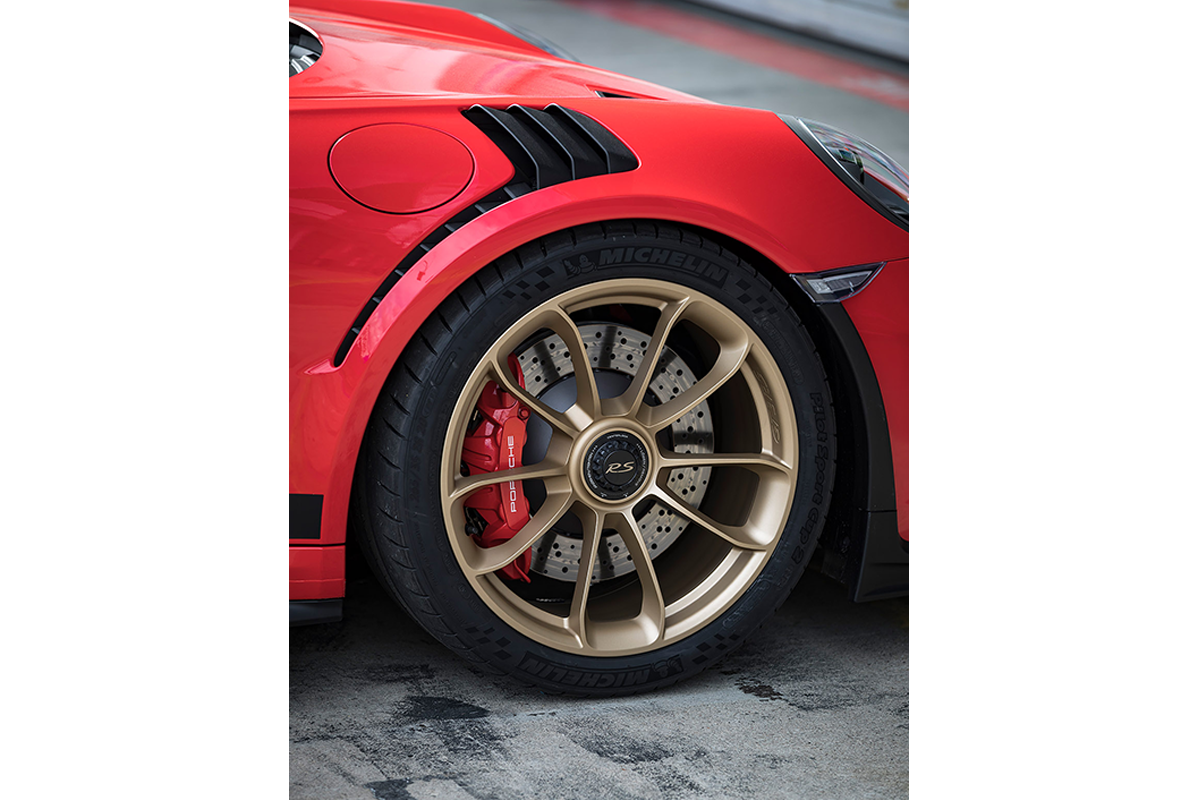
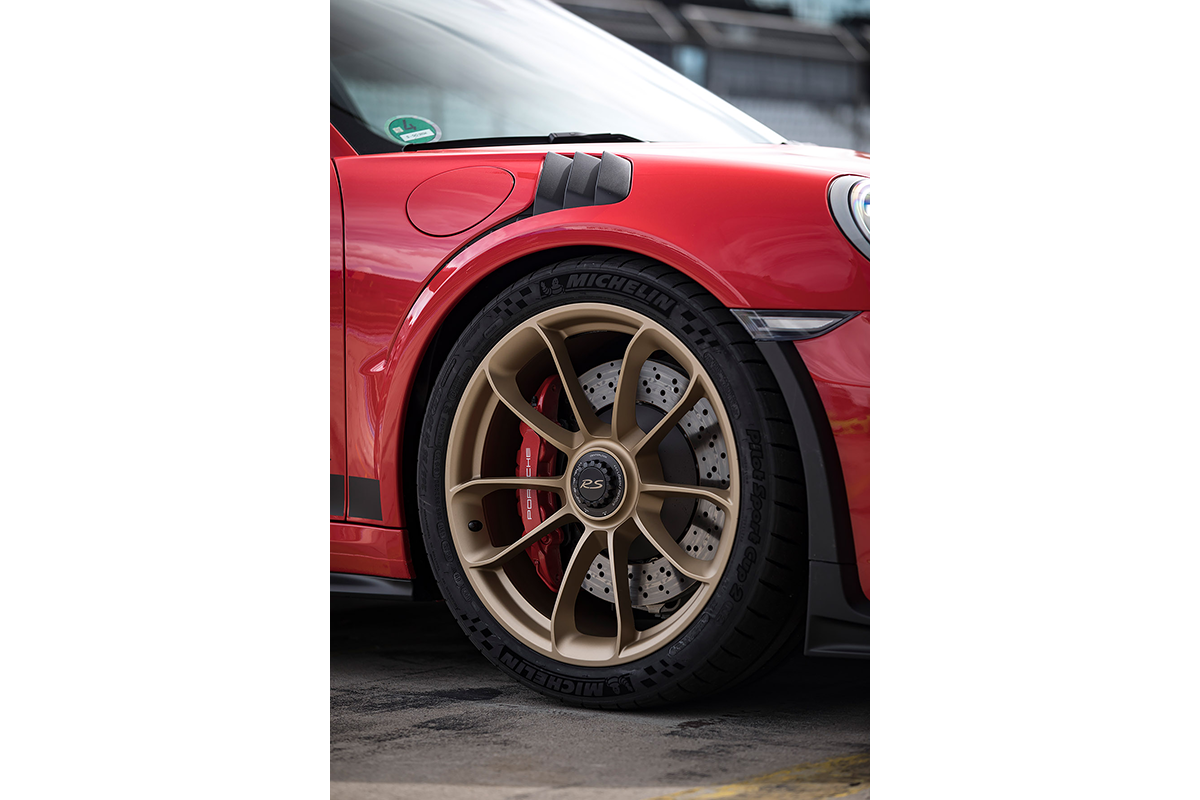
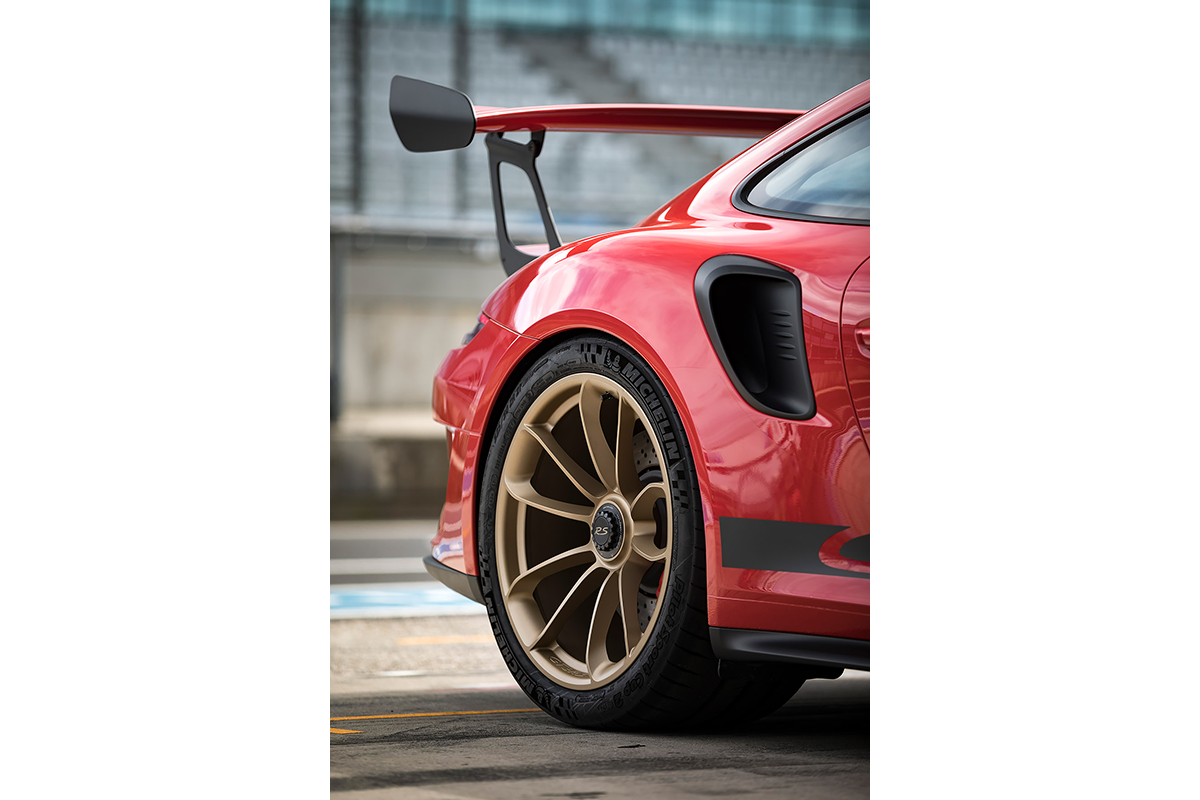
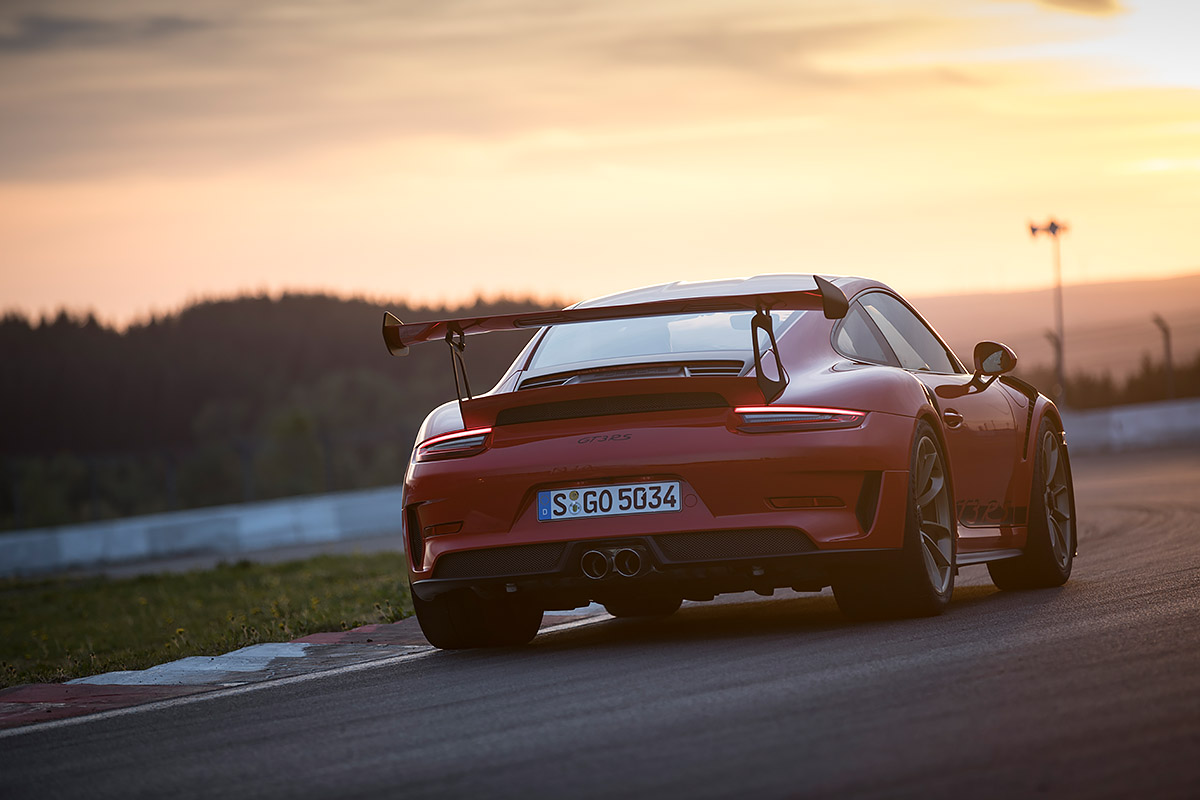
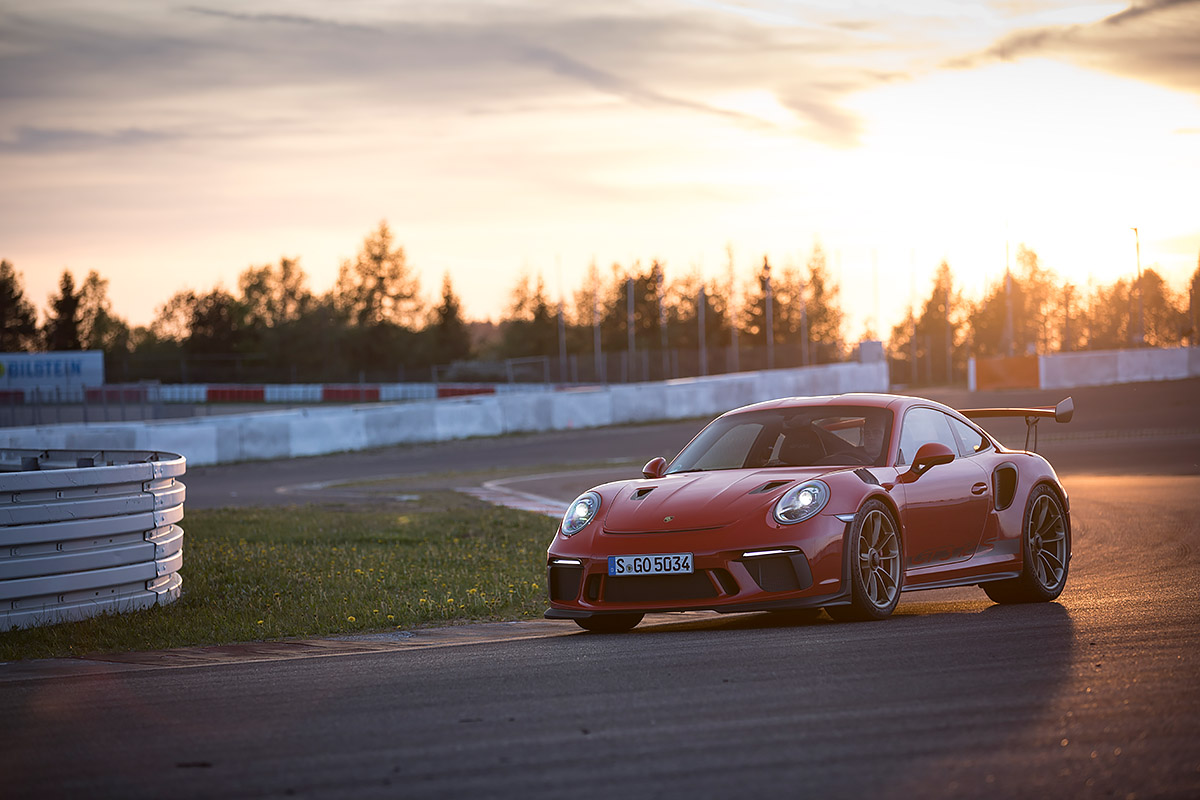
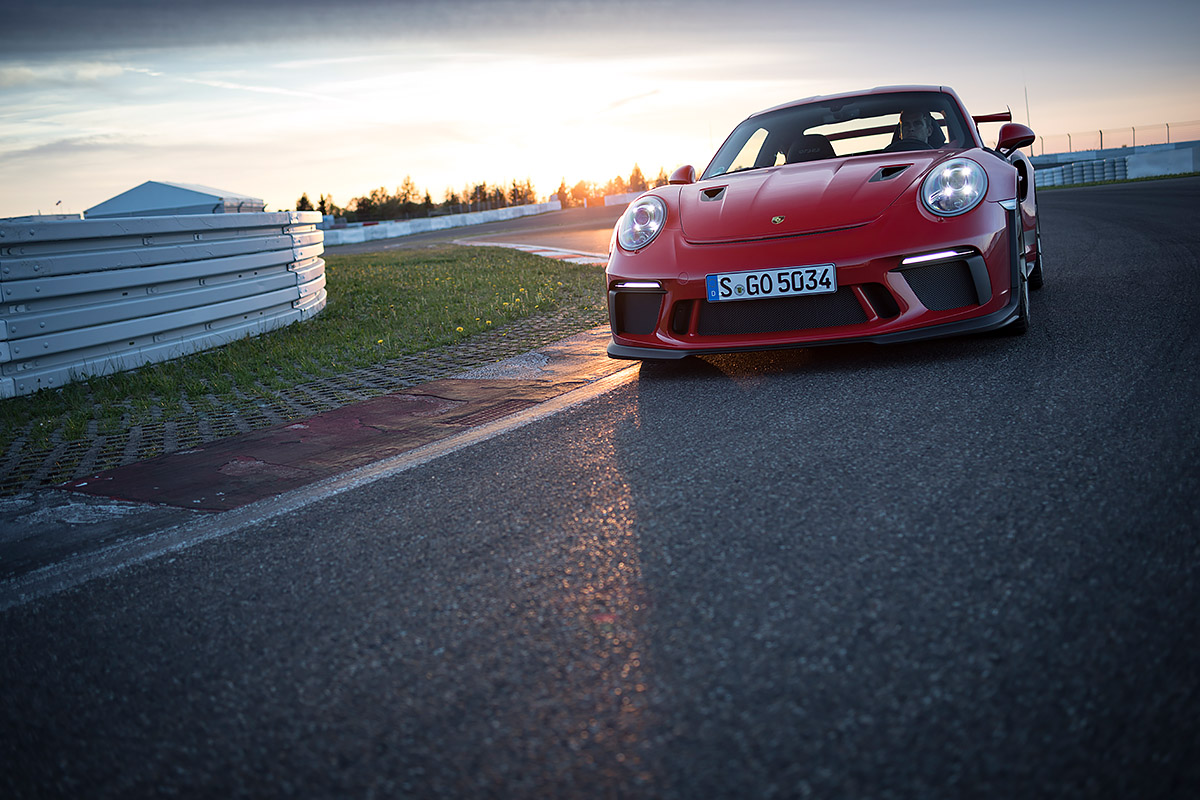
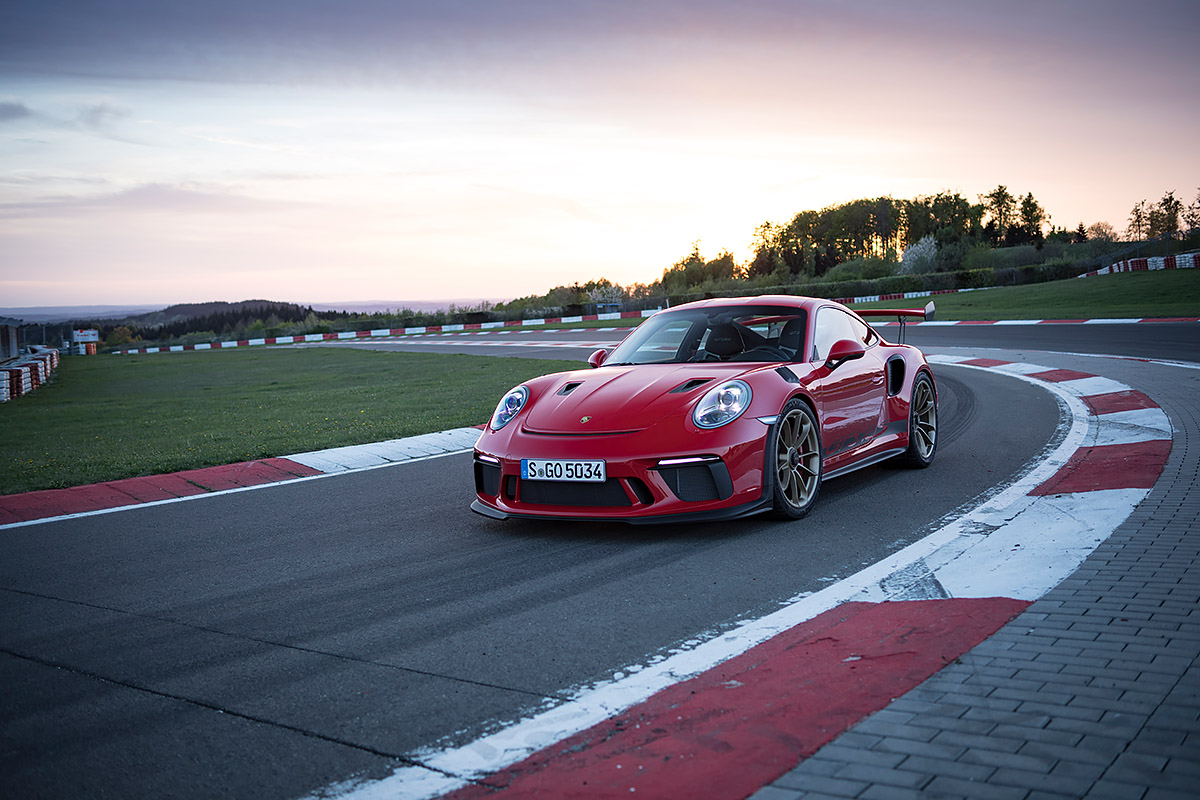
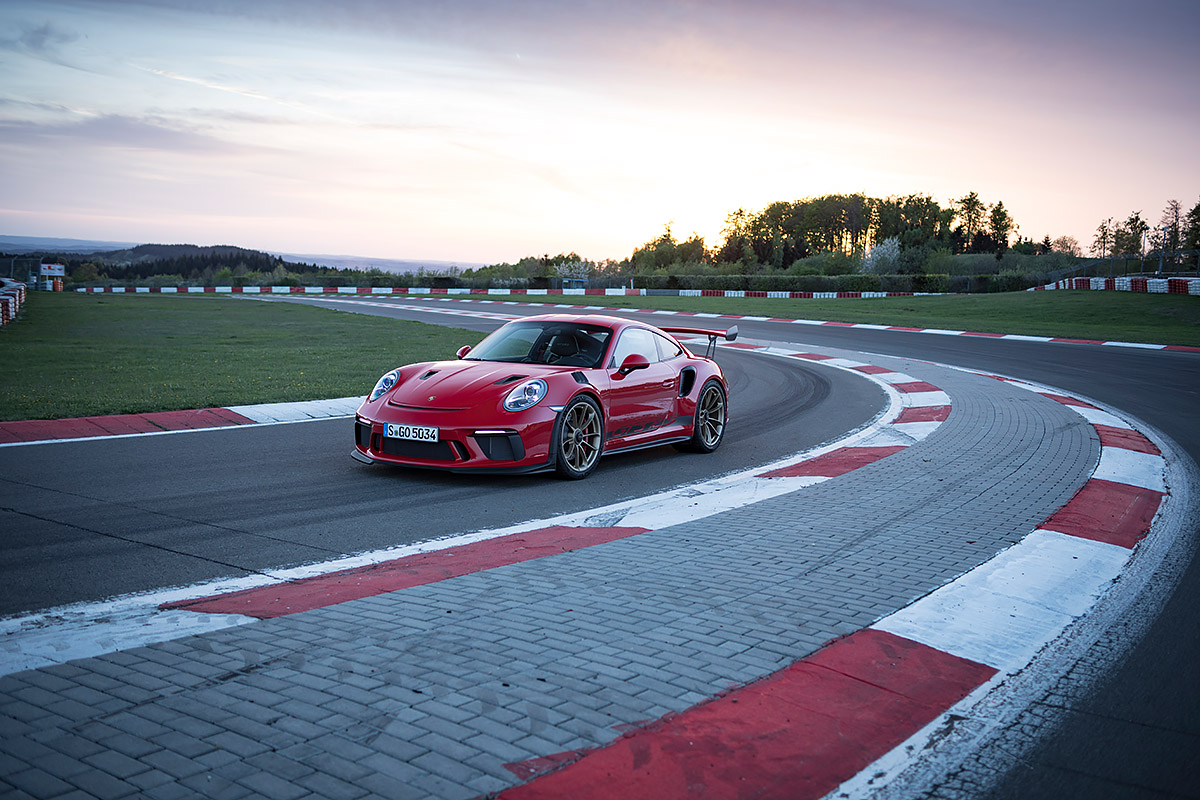
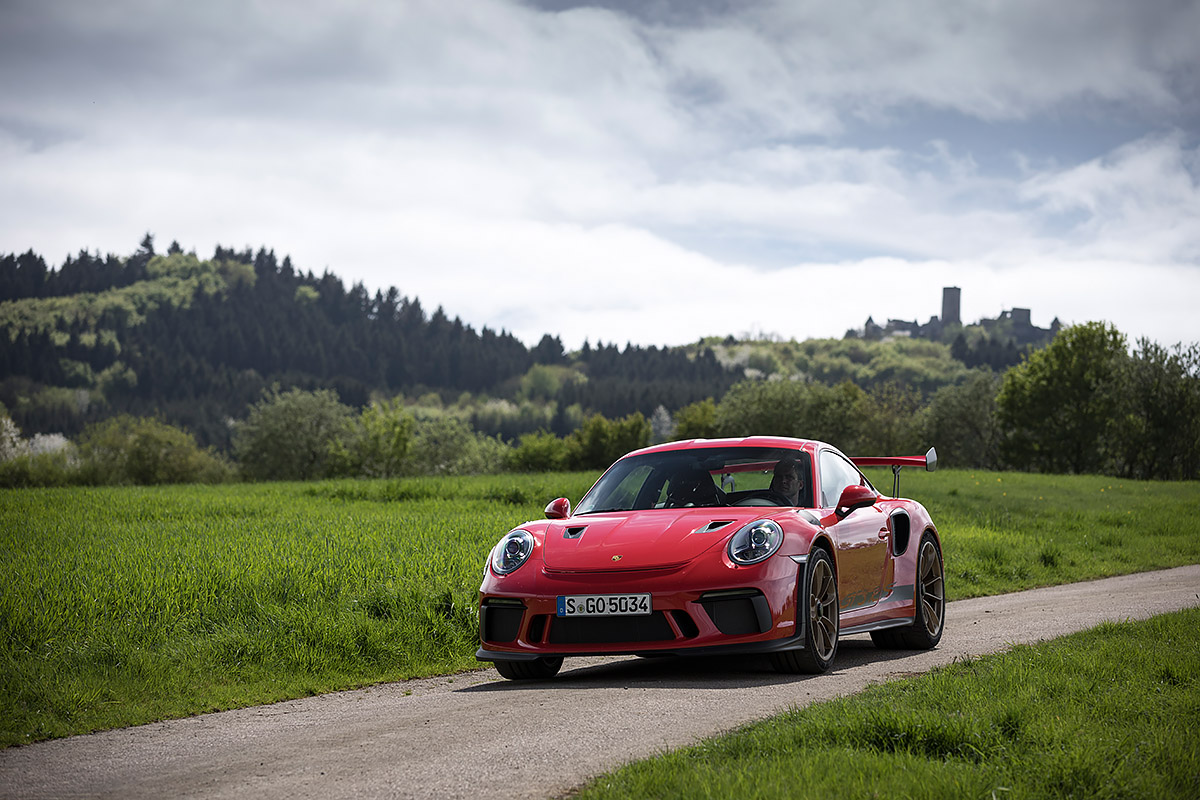

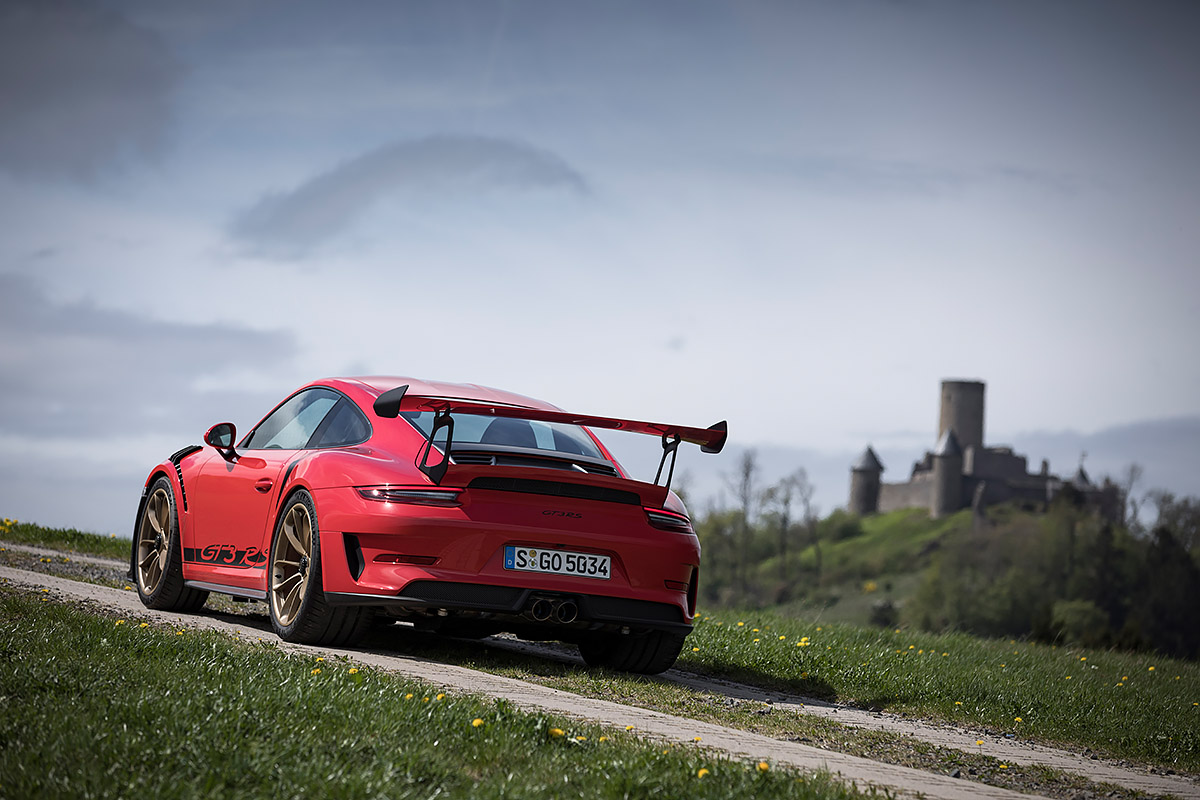
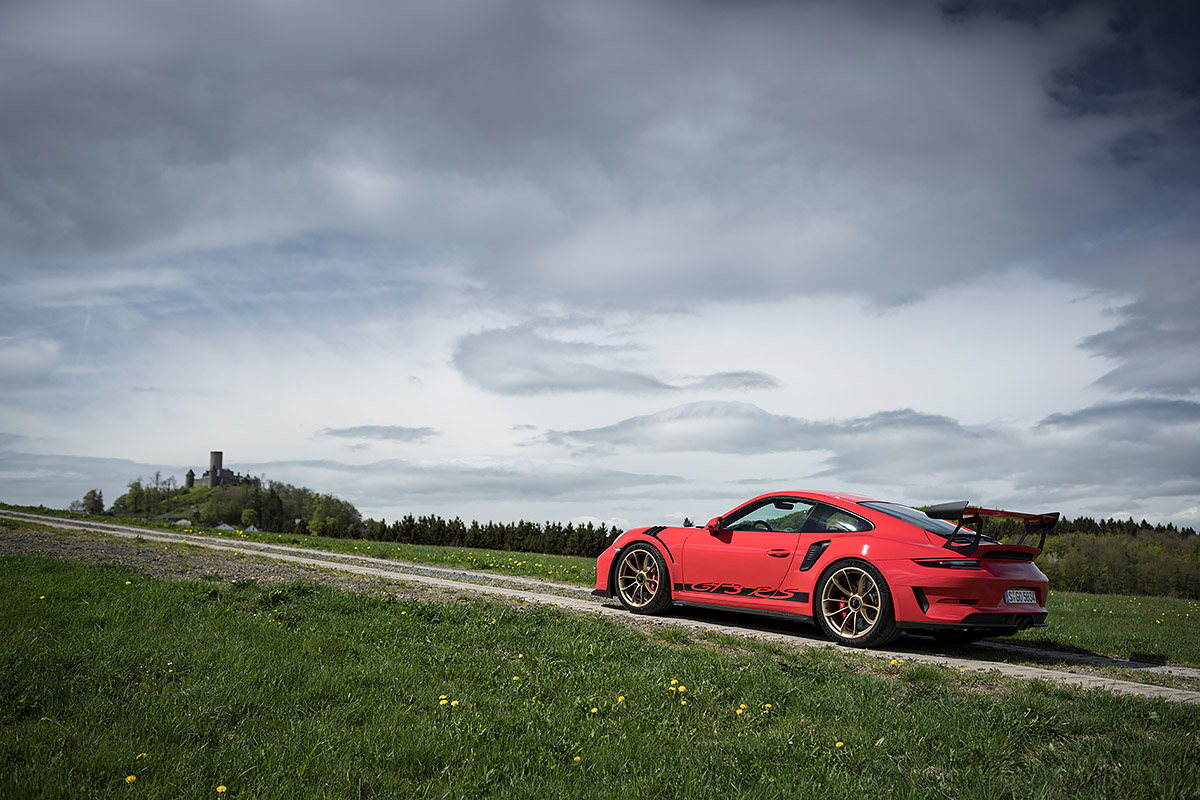
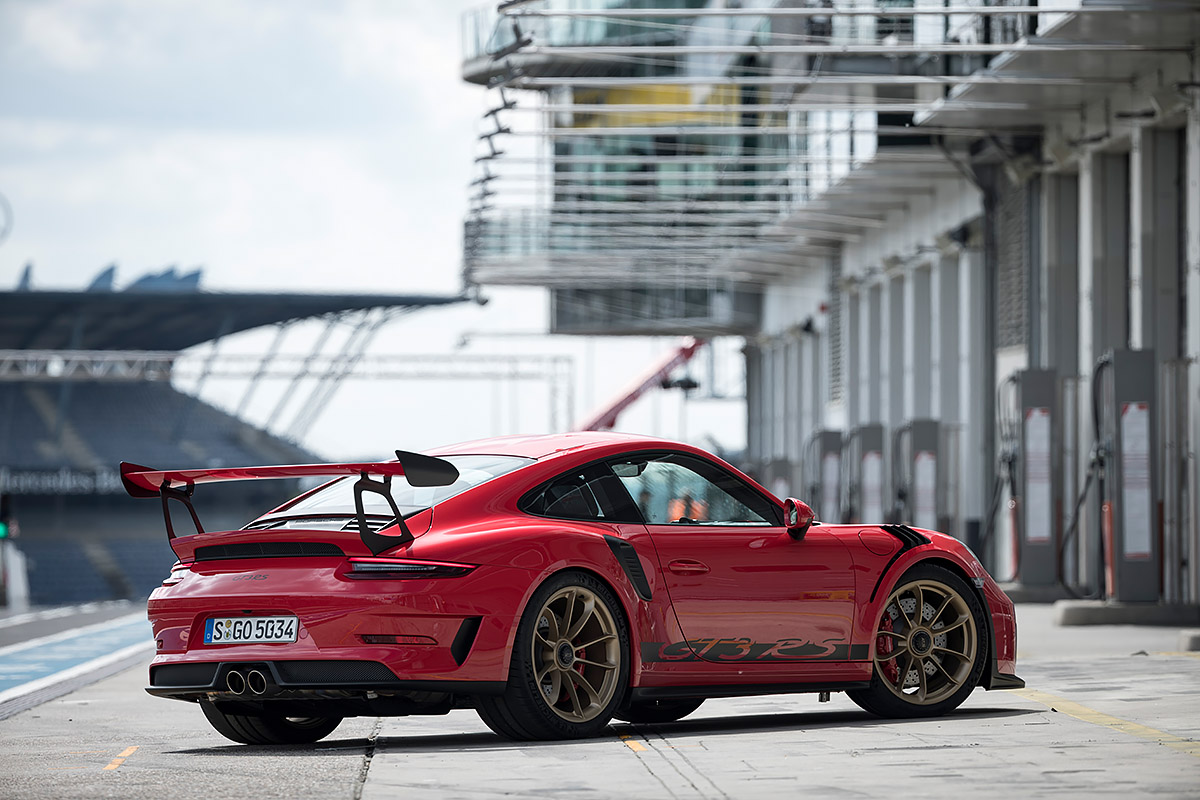
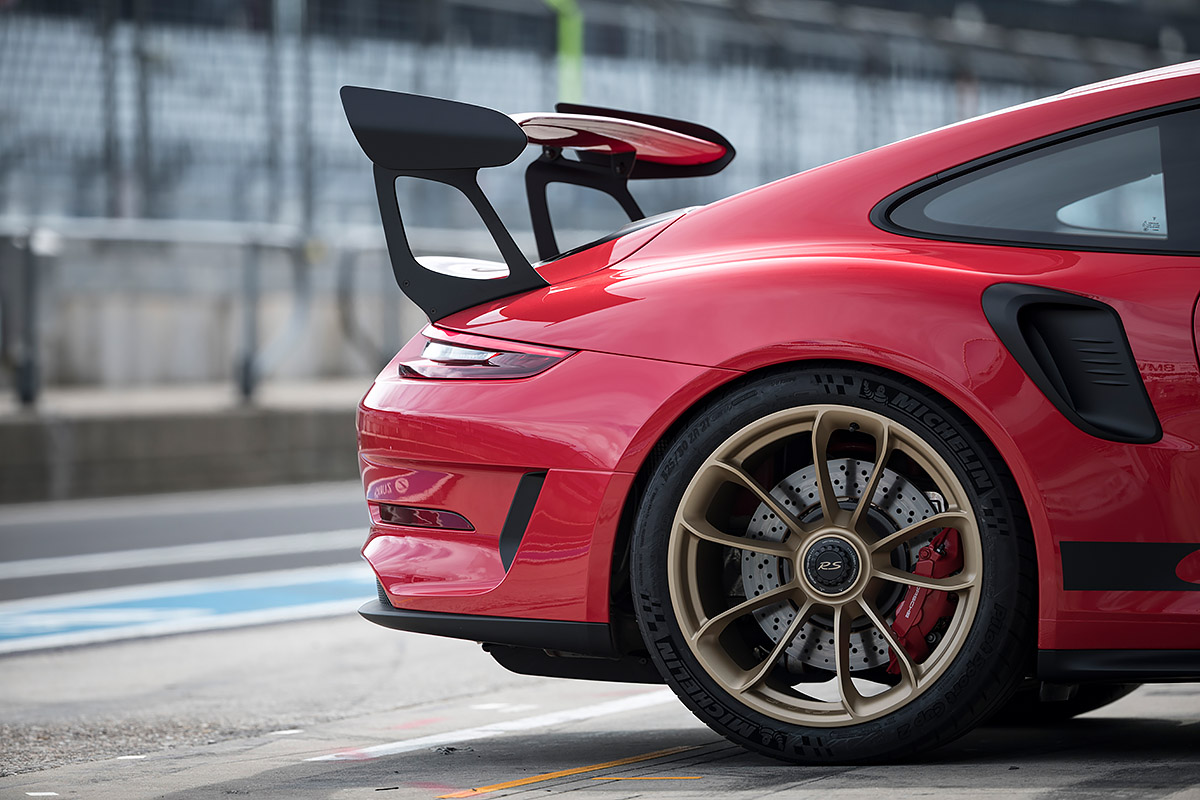
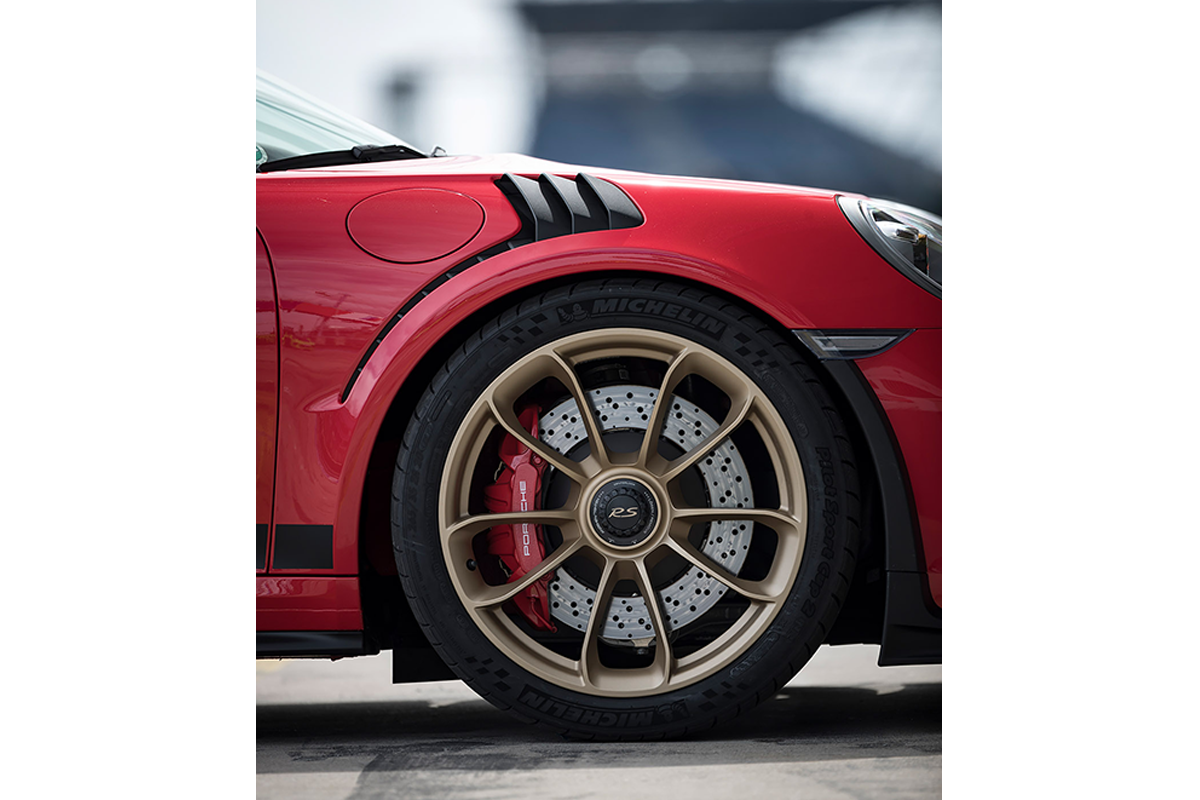
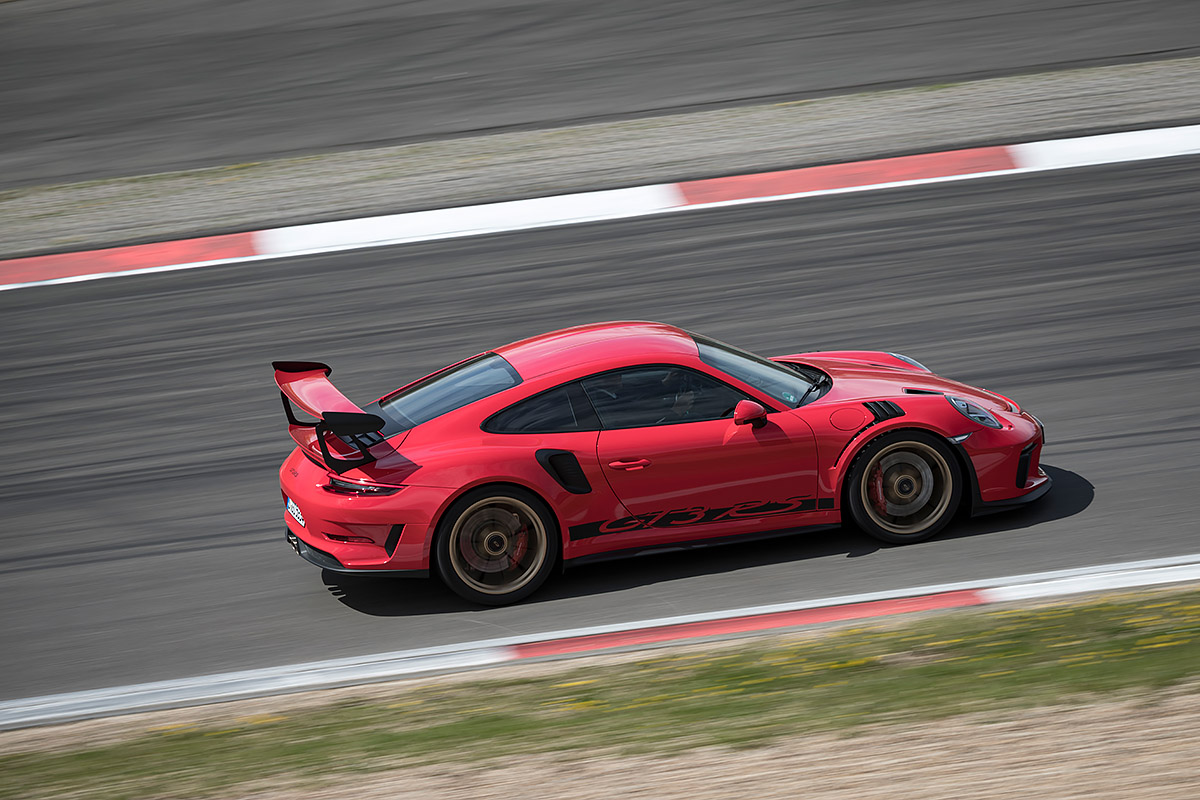
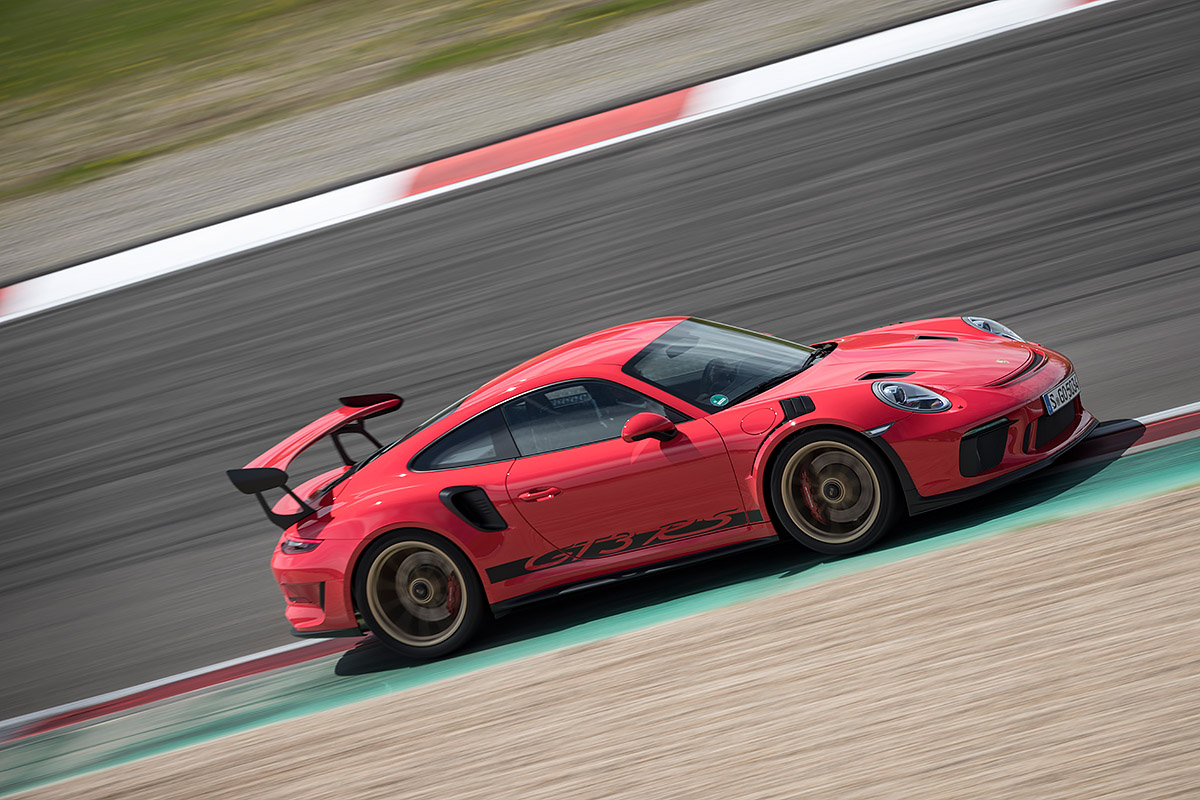
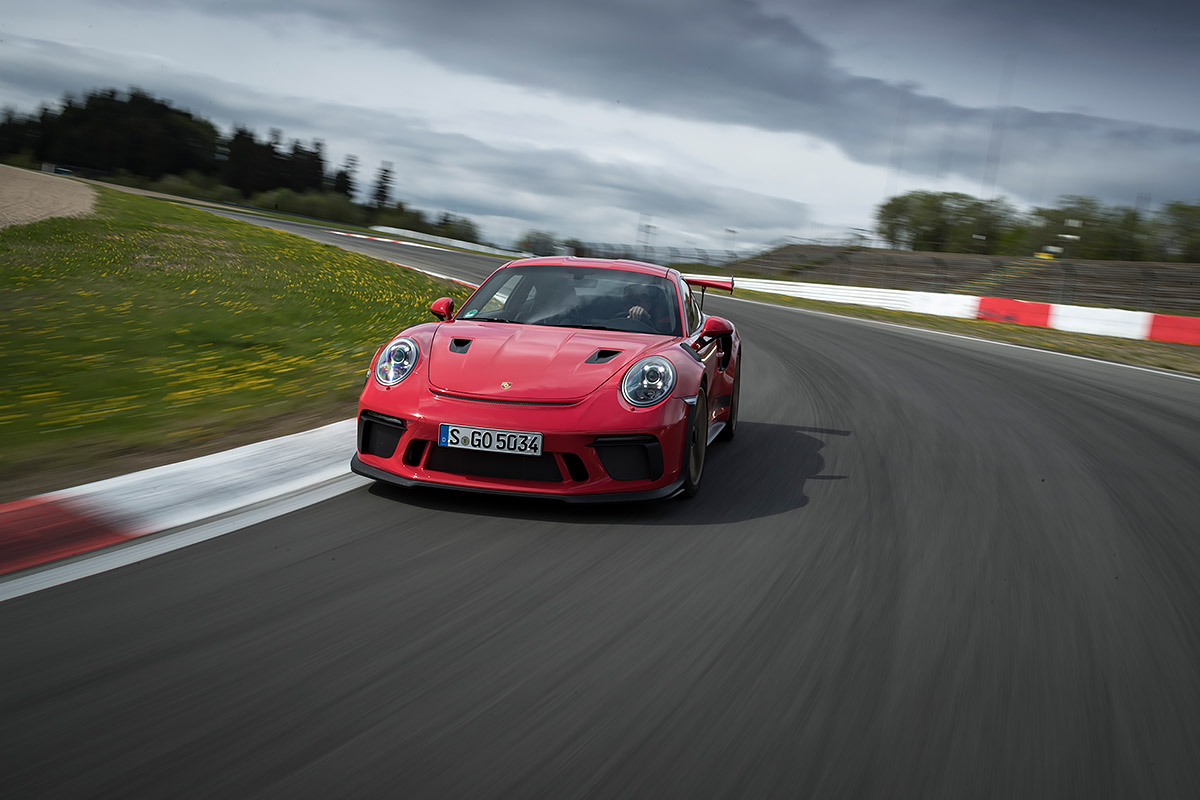
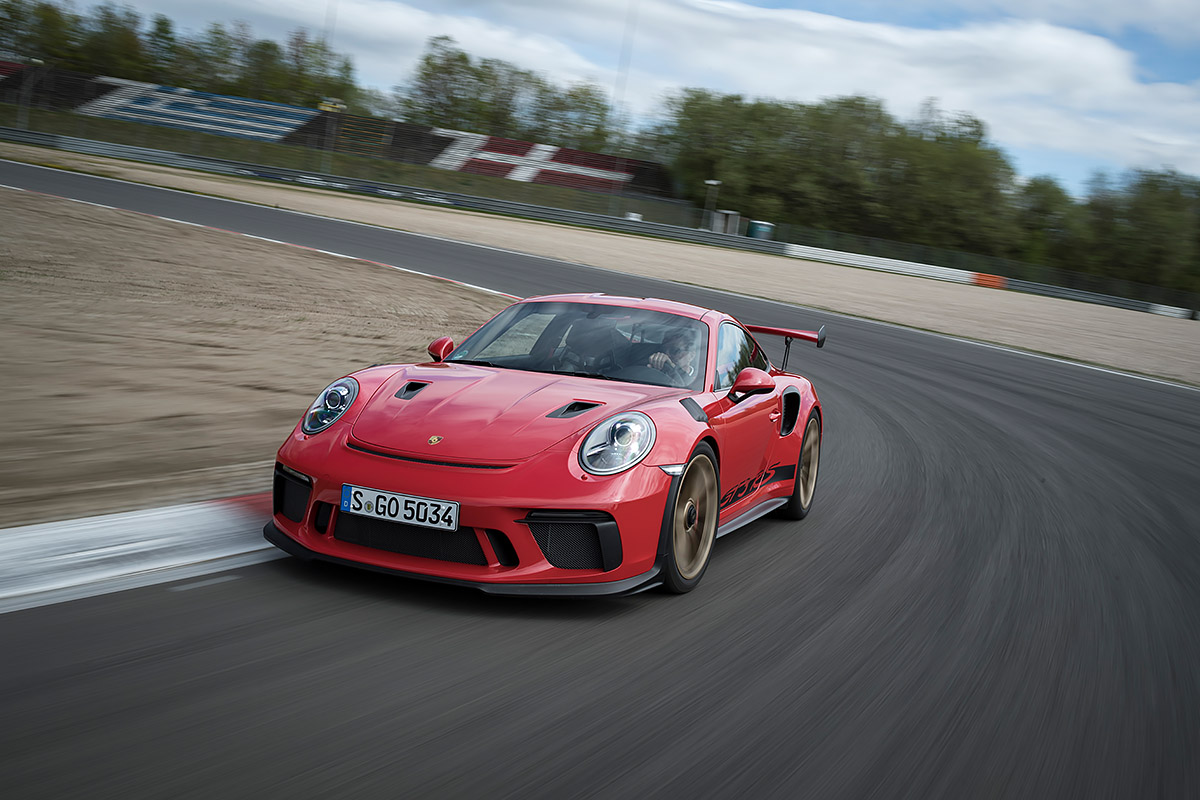
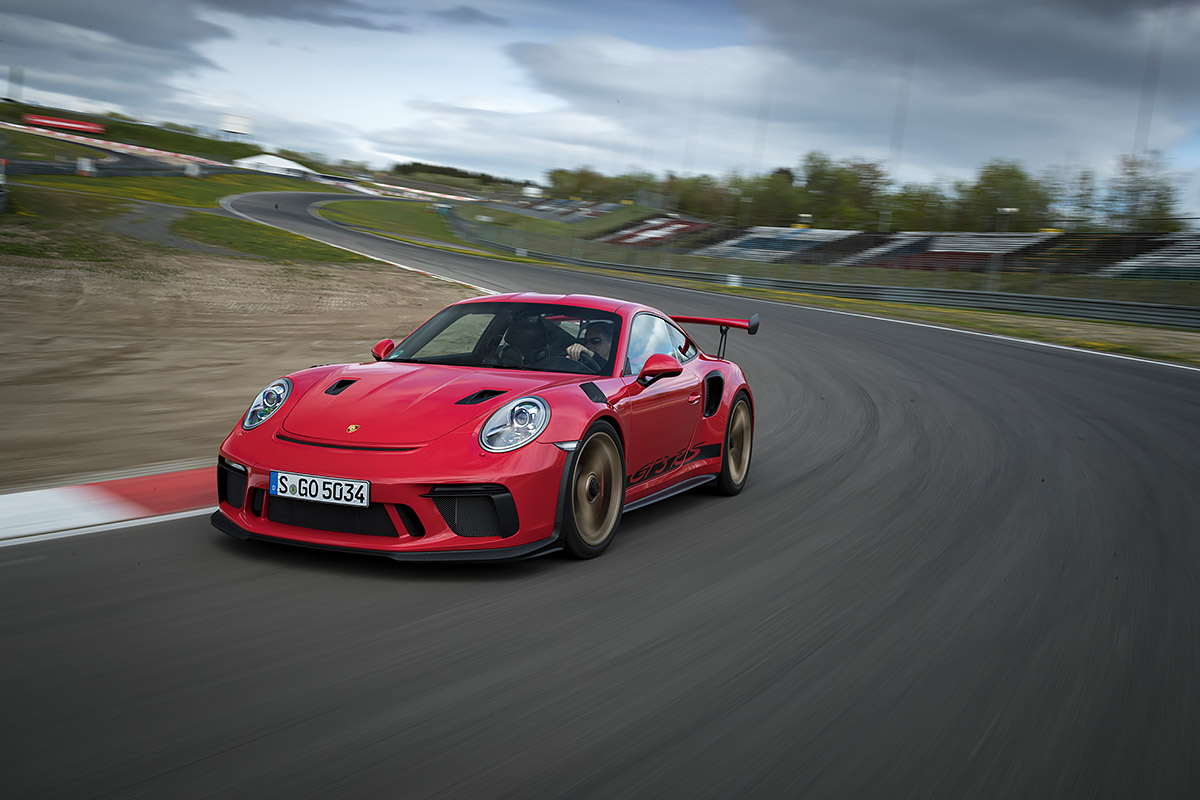

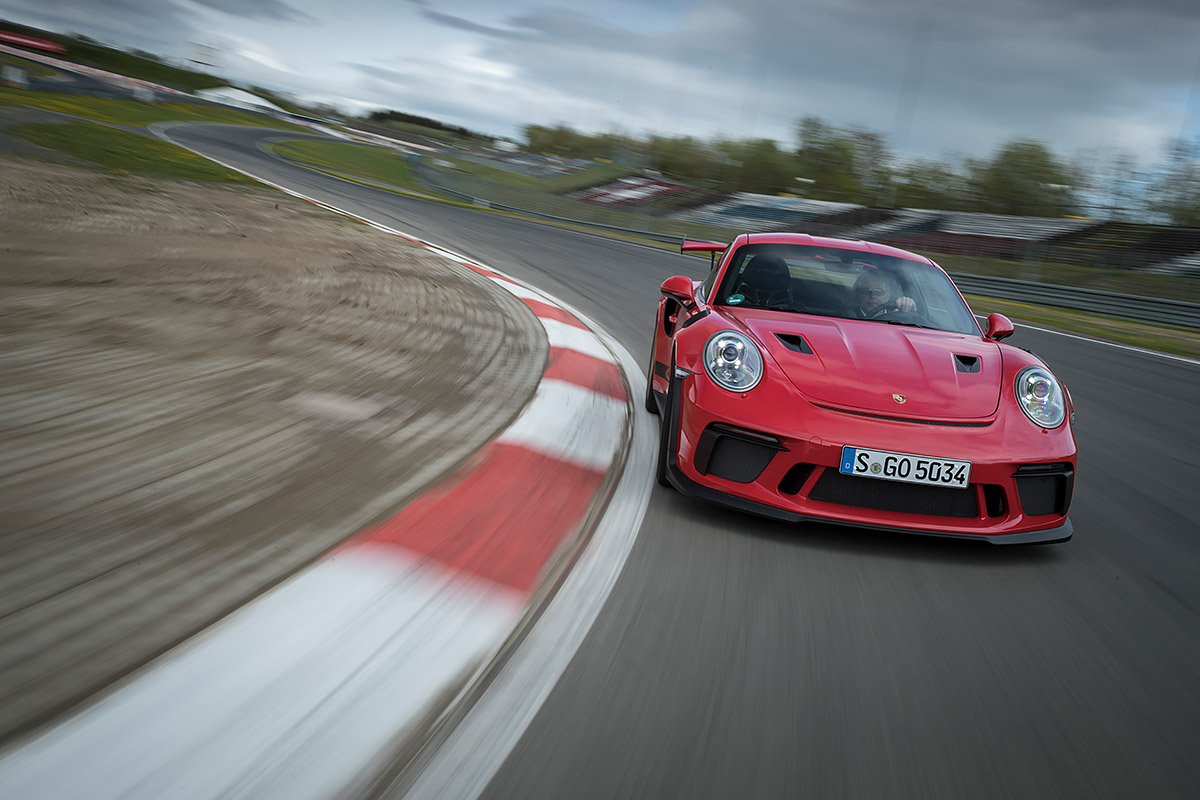
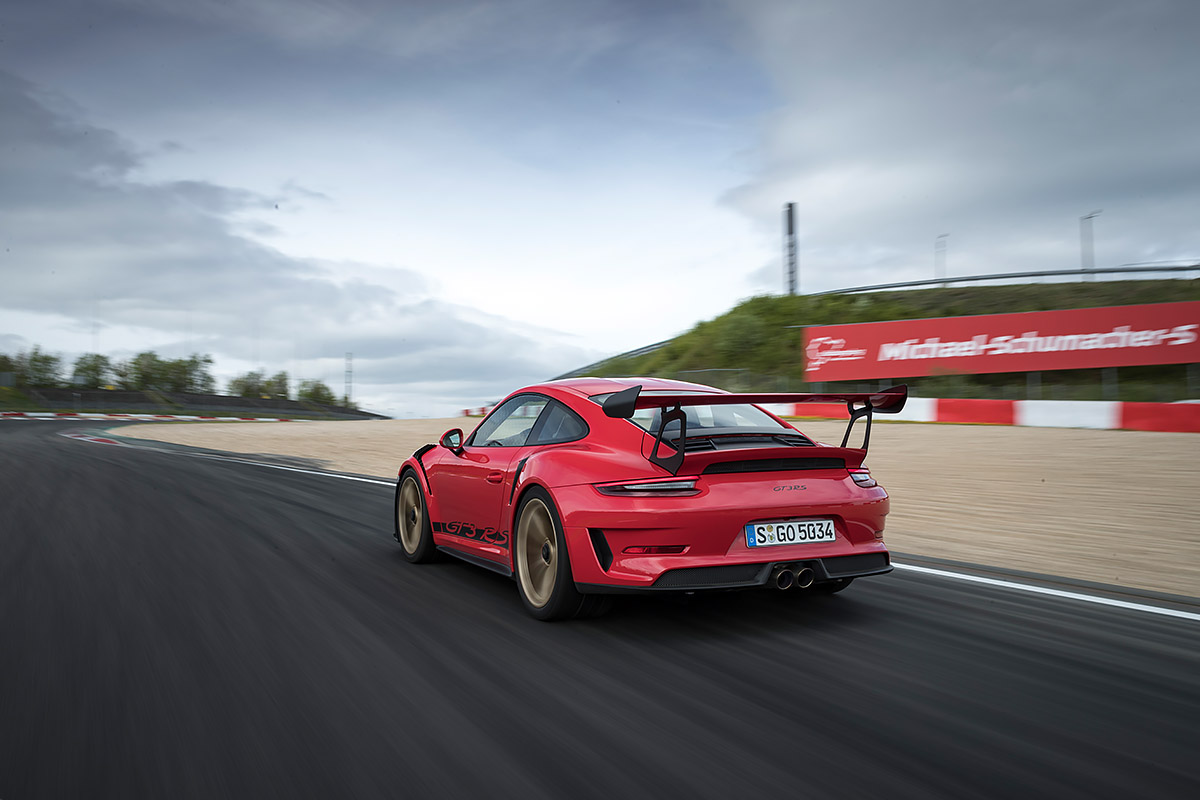
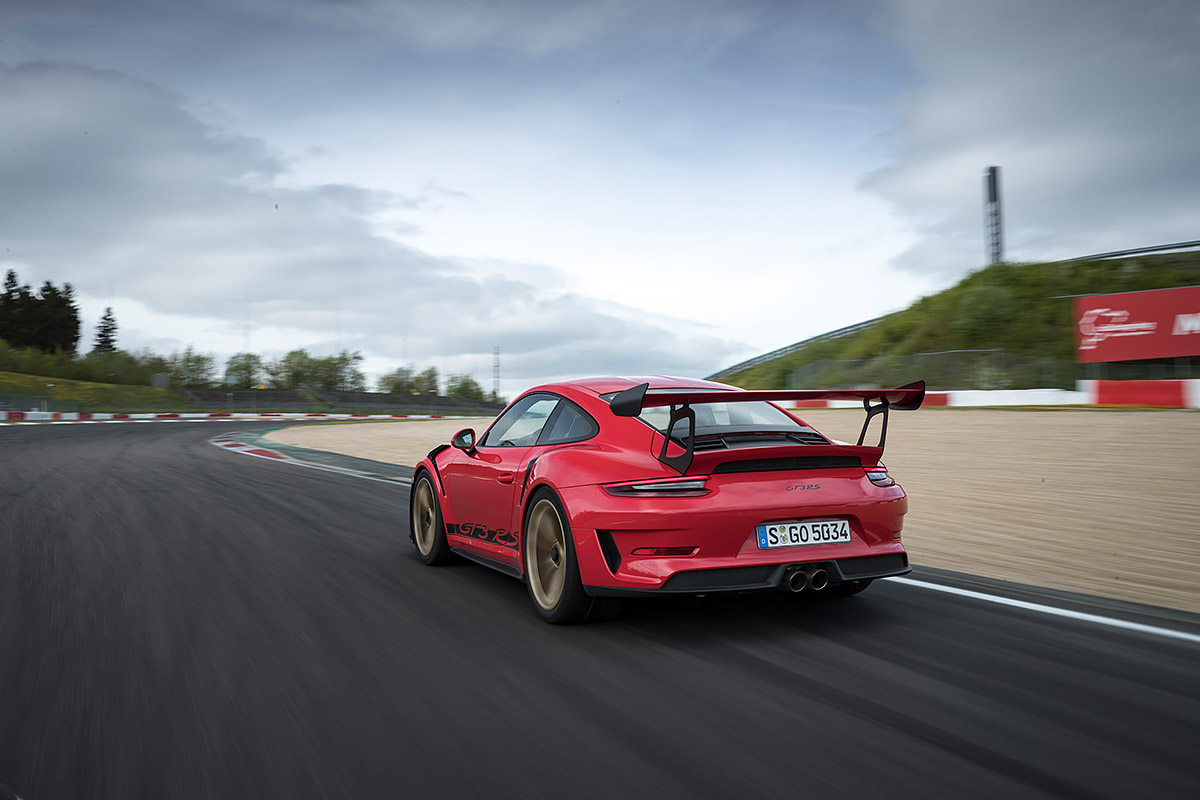
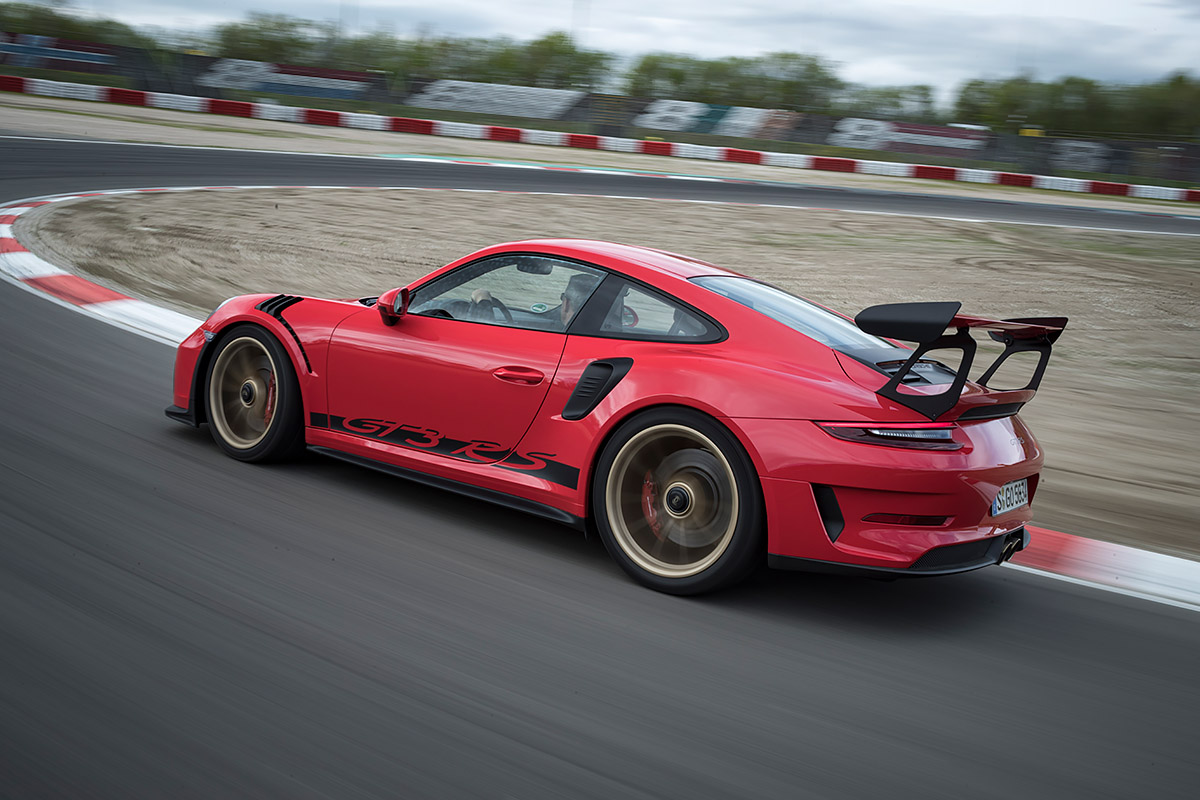
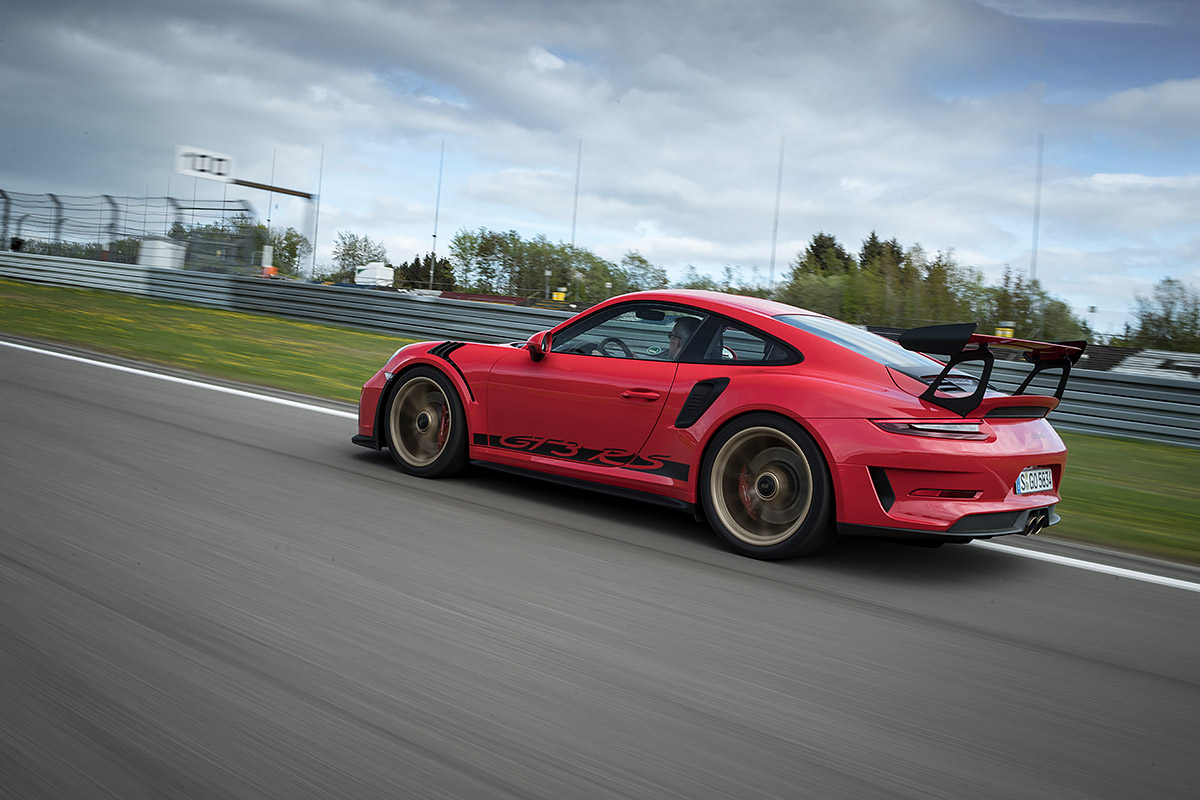
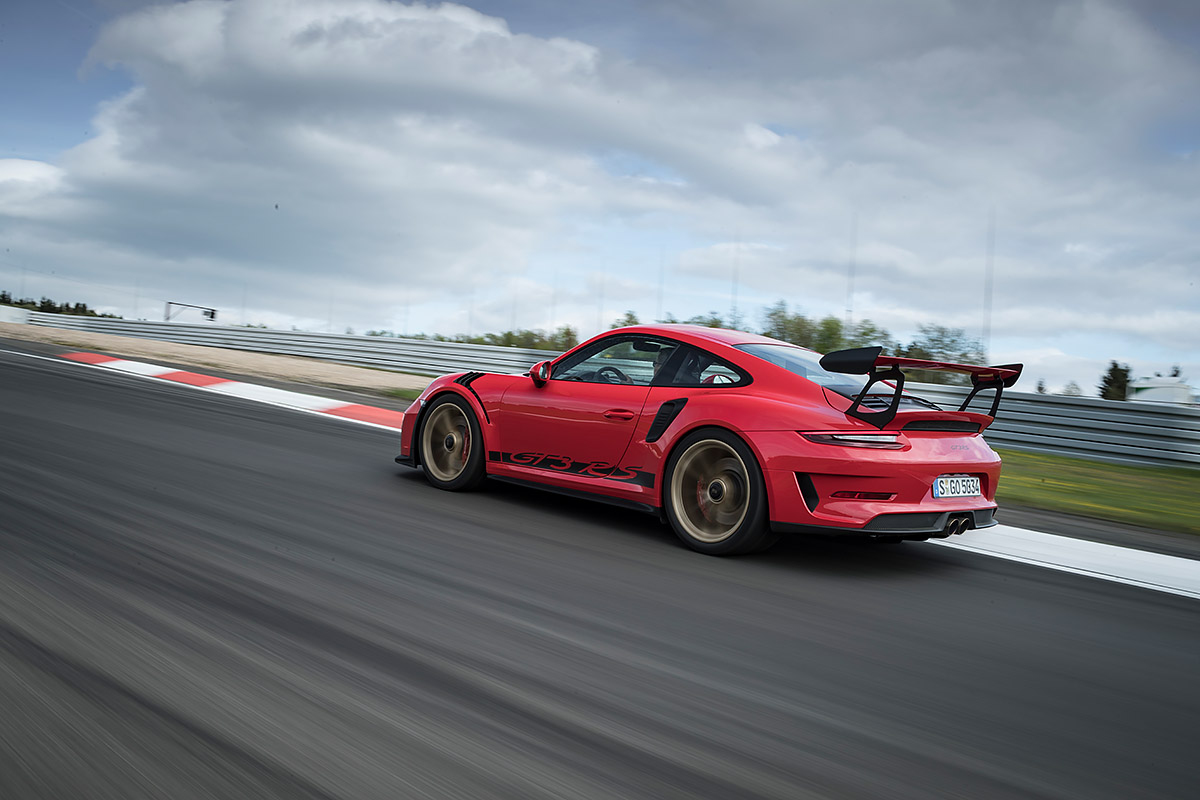
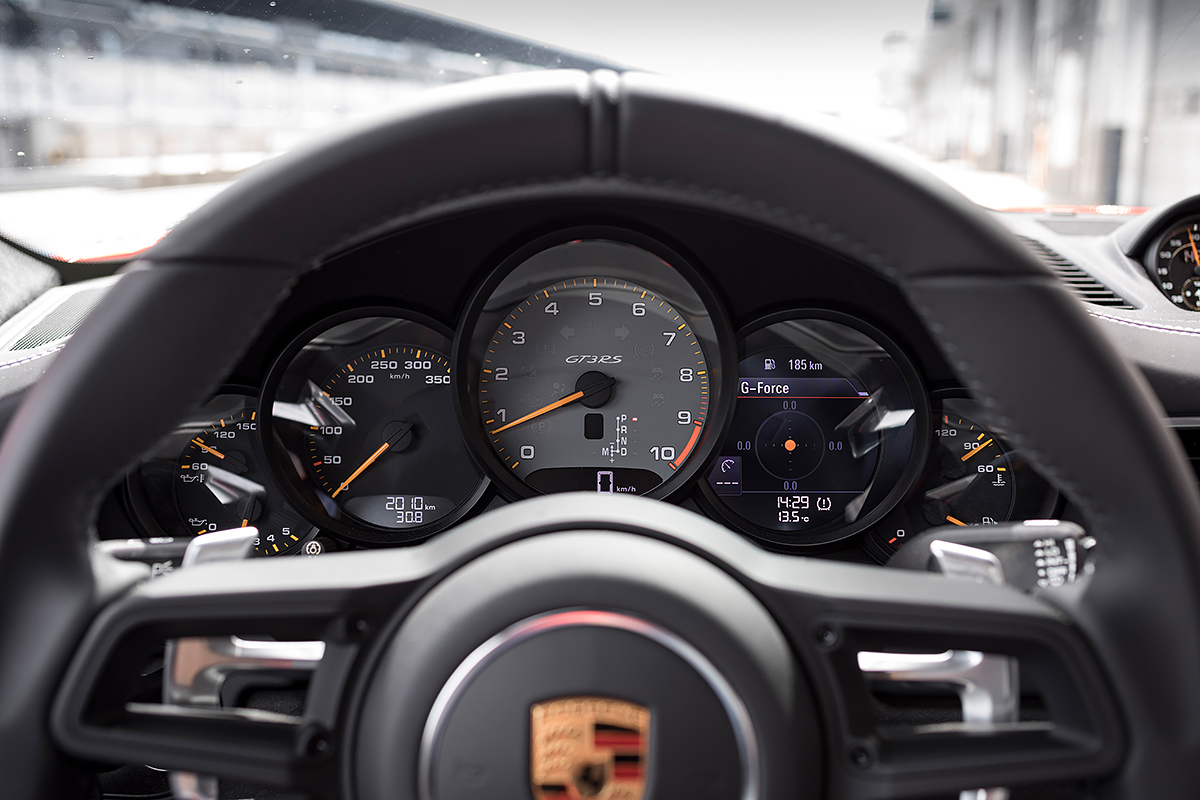
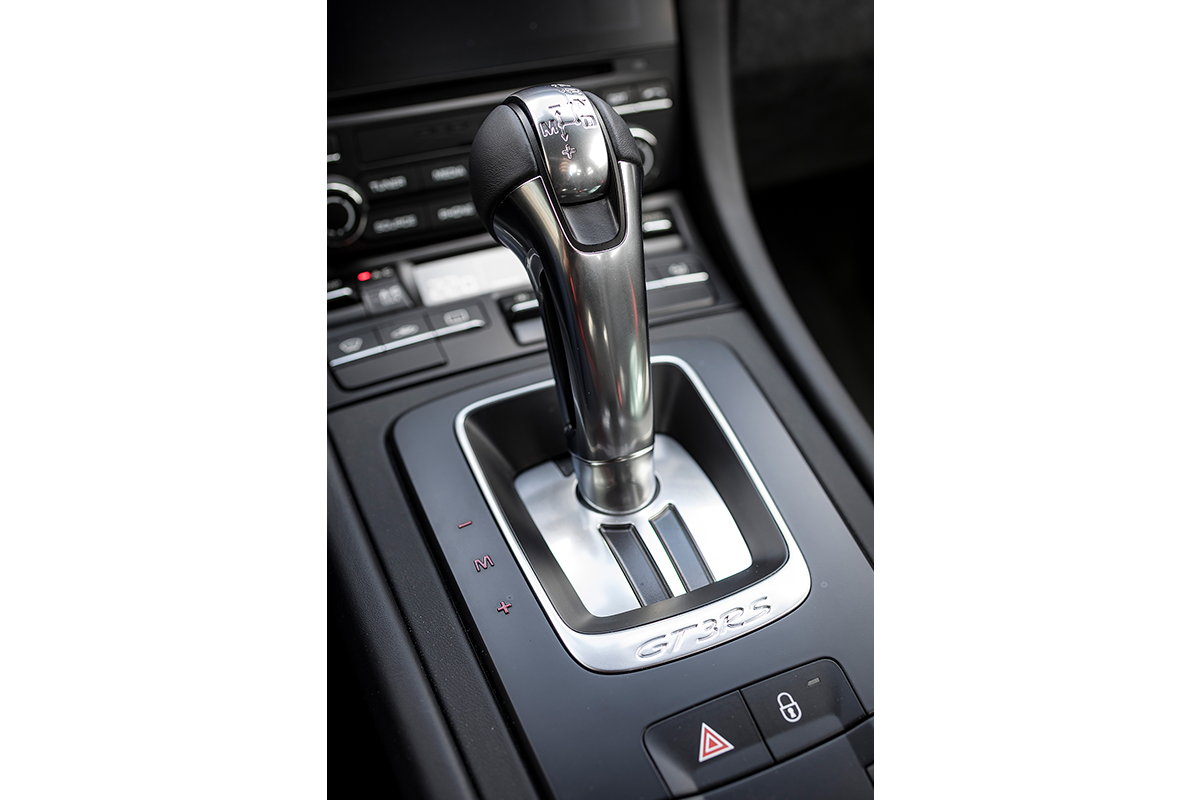
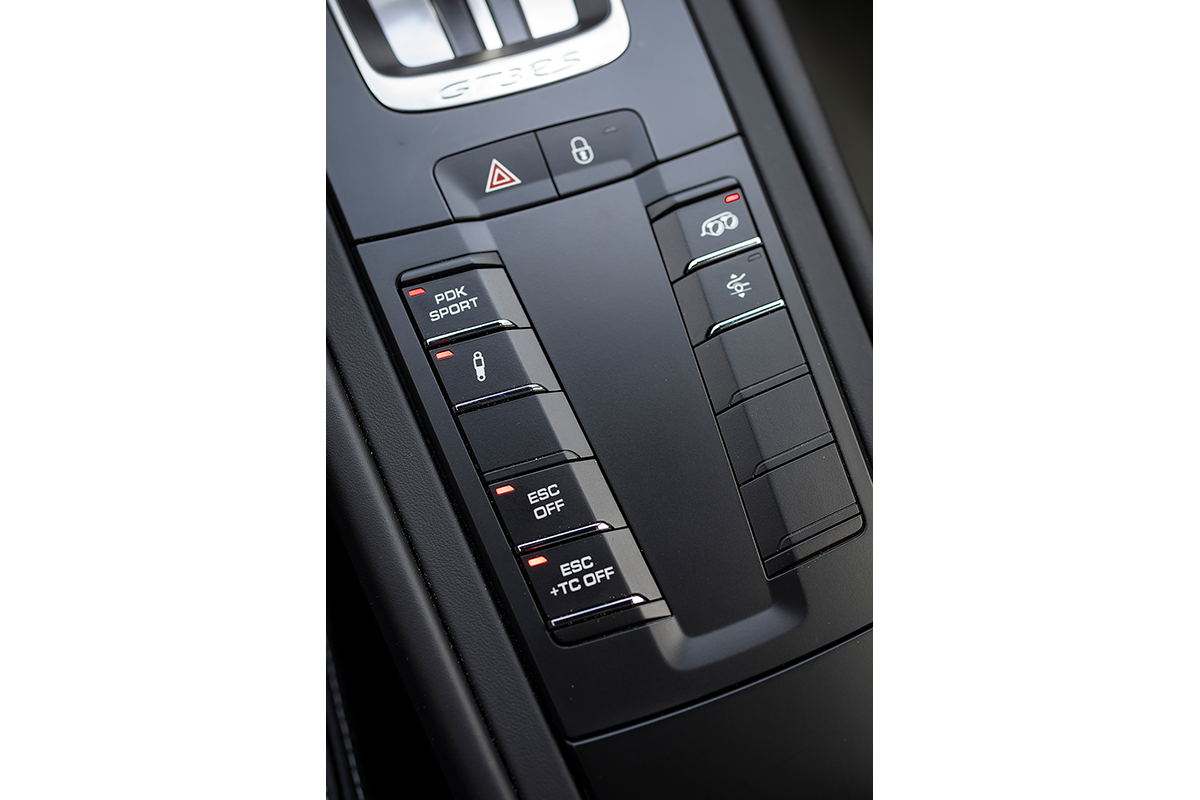
Porsche 911 GT3 RS (41 pics)
